WHY GO: For lovers of Early American History, there are plenty of things to do in Deerfield MA to keep you busy for a weekend or more. Billed as “America’s Town, America’s Story,” Historic Deerfield MA in Western Massachusetts is a treasure trove of hands-on American history.
In addition, while driving from I-91 to Historic Deerfield on Routes 5/10, you’ll pass two establishments worth visiting – both over-stimulating for different reasons. Candles are just a teeny part of Yankee Candle Village – an enclosed mall like no other.
And the butterfly sanctuary, Magic Wings, is a haven for those who adore being surrounded by those flighty insects. Eat and stay at the cozy Deerfield Inn on this architecturally historic getaway with a side of shopping and butterfly wings.
(Looking for more weekender ideas in Massachusetts? Look no further than our Best Romantic Getaways in MA post. Historic Deerfield is also one of our 10 Quirky Places to Propose in Massachusetts)
If you are into stories of harrowing French-Indian attacks, the Revolutionary War, small (actually, miniscule) town life on the fringes of civilization, architecture, American History, fashion through the ages, the decorative arts, eccentric personalities, or are just visiting your kid at Deerfield Academy, the dozen buildings and museums of Historic Deerfield, scattered among Deerfield Academy and private homes, are worth exploring for a couple of days.
History of “Historic Deerfield MA”
Deerfield Massachusetts has been celebrating eccentrics and the common man since the mid-1930’s, when Greenwich CT residents, Helen and Henry Flynt, first sent their son to Deerfield Academy. With deep pockets, the Flynts orchestrated a rebirth of this farm community: purchasing and renovating derelict properties, including the long-standing 1887 Deerfield Inn.
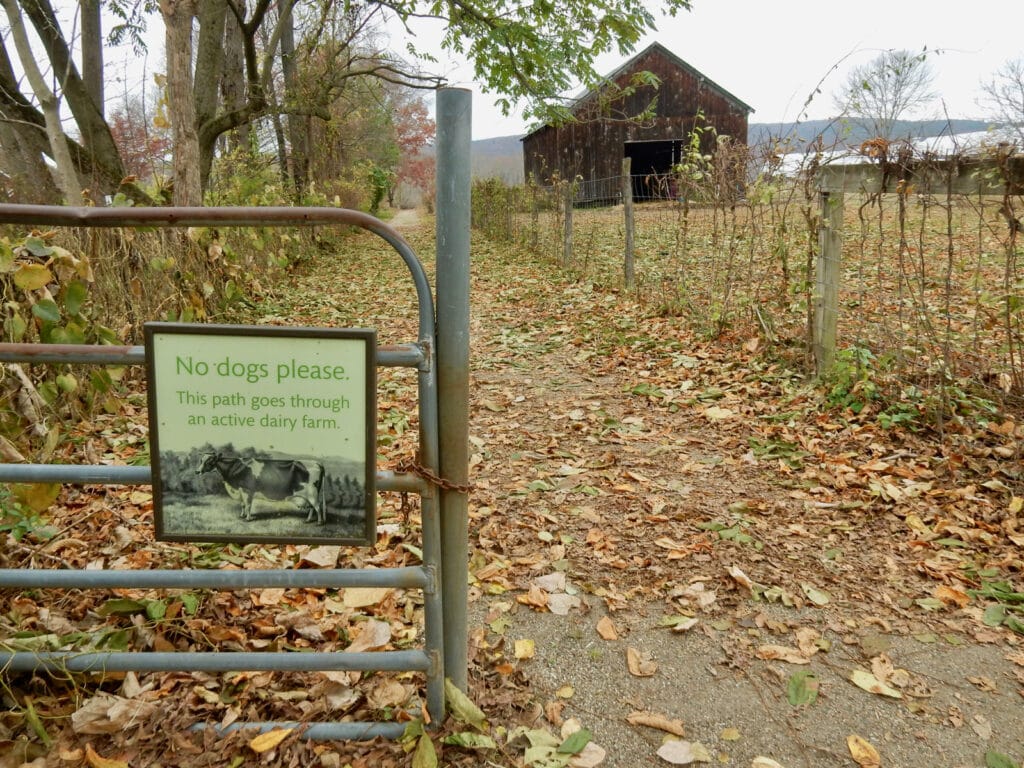
Initially, Flynt’s aim was to restore buildings for Deerfield Academy housing. But as the structures were torn apart to put back together, the deconstruction revealed tangible evidence of how people on the Colonial frontier lived, and died, in the 17th and 18th centuries. Subsequently, the Flynt’s initiative developed into a “quest to preserve and interpret Deerfield and early New England through artifacts and architecture.”
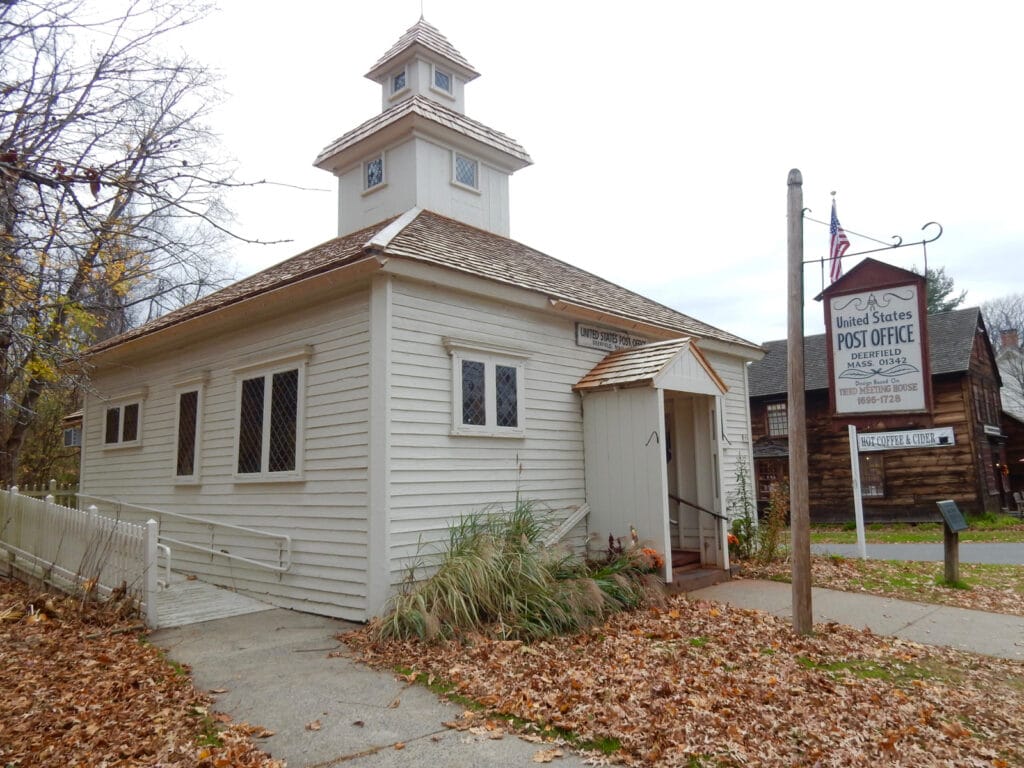
The majority of these buildings became the genesis for what is now Historic Deerfield – a living history, open archeology, academically researched village museum where docents weave back-stories of community figures with academic insight into tools and artifacts of the day. These stories make for absorbing tours.
Deerfield Academy and Bement School
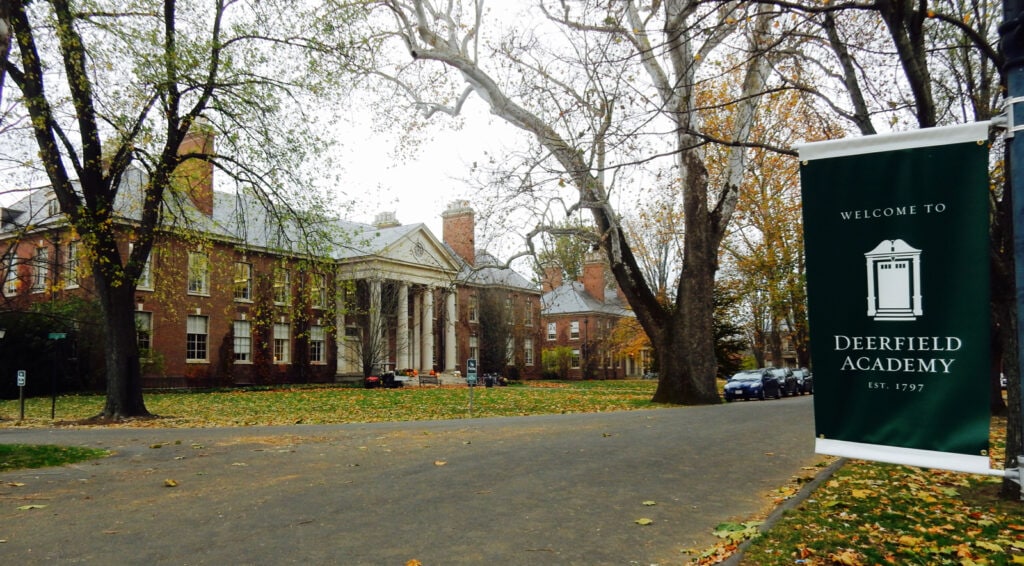
Several schools are located in and among properties belonging to Historic Deerfield: The highly touted and exclusive boarding high school, Deerfield Academy, and the K-9 Bement School (“Compassion, Integrity, Resilience, Respect”).
Walk Old Main St. around dismissal time, and you’ll find yourself surrounded by students.
Things to Do In Deerfield MA
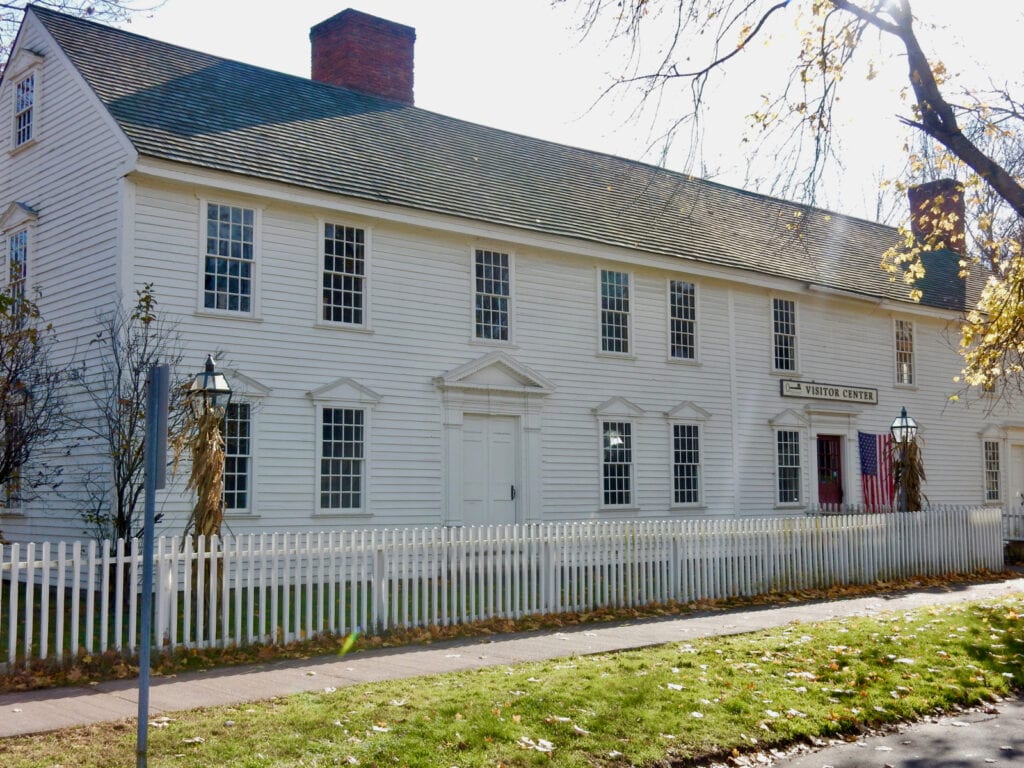
TOUR: Historic Deerfield
Historic Deerfield has been called the “Best documented small community in America,” where “regular people lived their lives 200 plus years ago.” Though there were several fatal raids prior to 1704, much is made of the French-Indian attack that claimed 50 Deerfield lives and resulted in many other residents held captive and shipped off to “New France” (Canada). Some returned with an earned respect for preserving the past, setting off a “building boom” in the early-mid 1700’s.
Maintained at its original scale, with all of its buildings in their original spots, the village is considered an “above ground archeological experience.” Since restoration is ongoing, there’s always something new to discover. Historians implore visitors to “tune in next week to connect to the past.”
Visitors Center
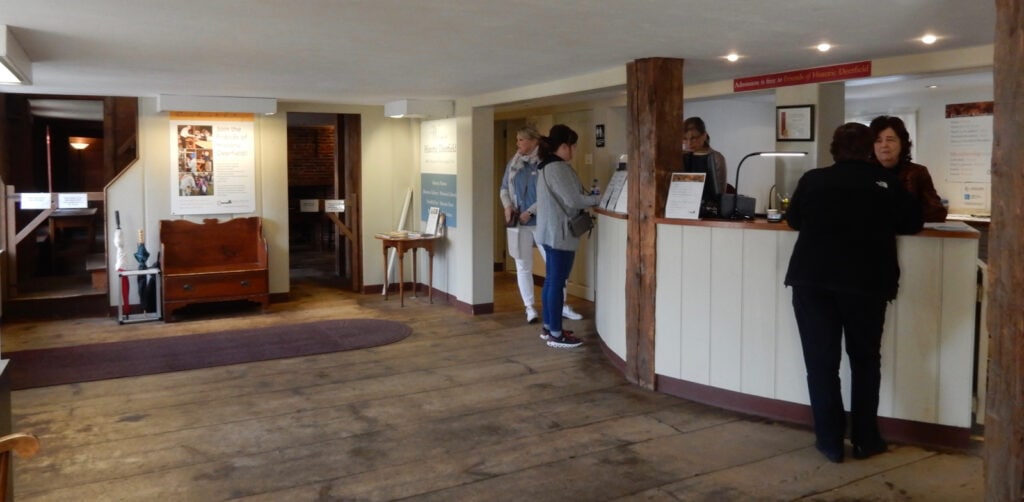
Begin in the Visitor’s Center – found at a point that bisects the Southern and Northern halves of town – right across the street from the Deerfield Inn.
Pick up maps, a tour schedule (4 homes have guided tours, the rest are self-guided), and watch a great orientation film. Be aware that guided tours begin on the hour and most last 30-40 minutes.
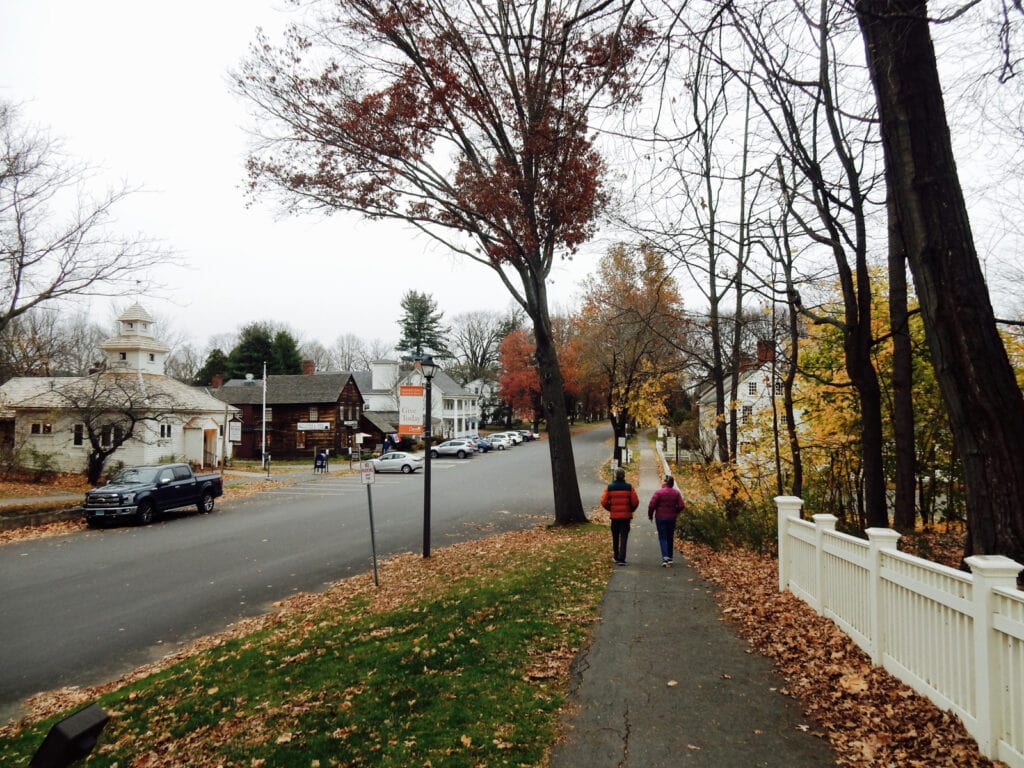
There is no “correct” way to see everything, and in all honesty, some who visit just like to wander the pretty mile-long Old Main St. on which the homes are located: and perhaps pop into a few. But for those who don’t want to miss a thing – this is how I did it over two days:
How to See All Buildings in Historic Deerfield MA
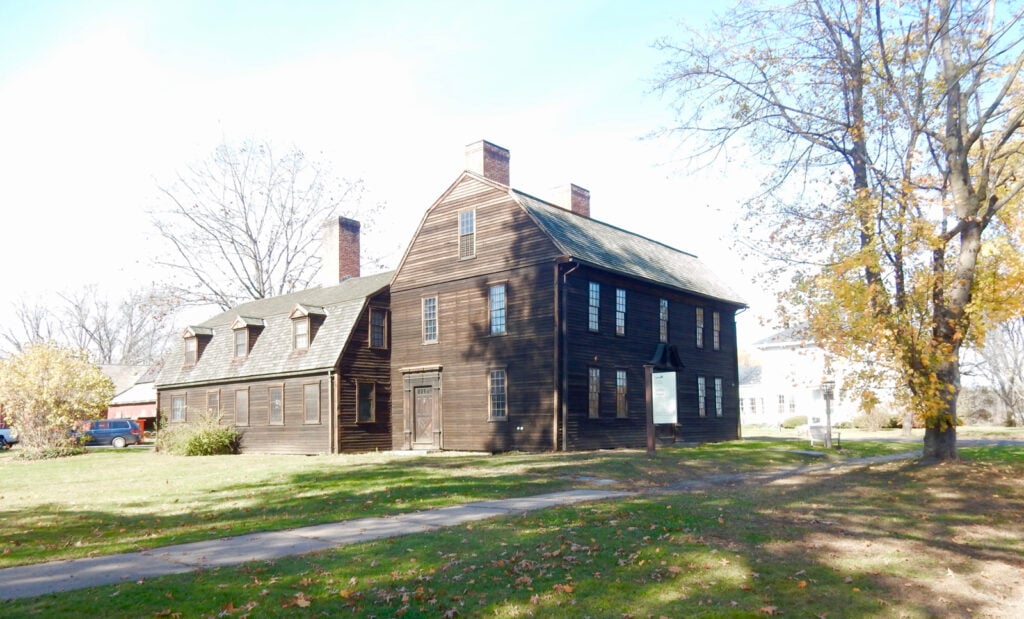
Ashley House – guided tour
This 1734 Georgian structure was once a cornerstone of Old Main St. in the 1700’s. But by 1860, it had been relocated to a field out back and used as a barn for a newly built Victorian house.
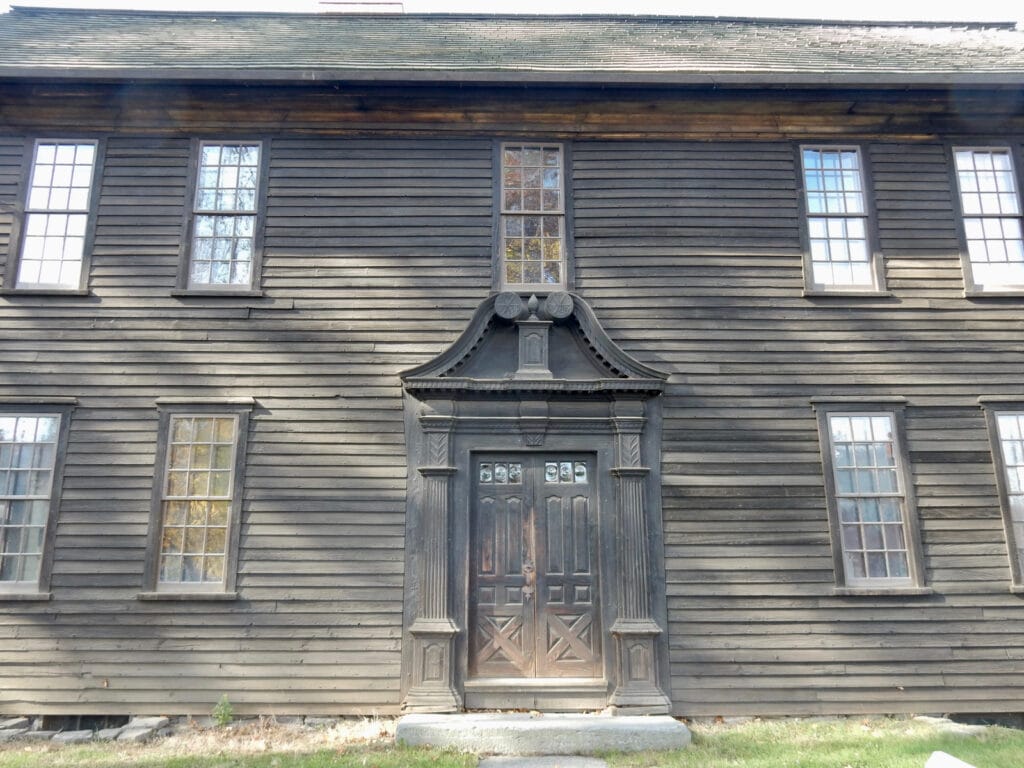
In the 1940’s the newer house was repositioned up the street so that this home, originally belonging to Reverend Jonathan Ashley – Deerfield’s 2nd minister – could be moved back to its original location and restored.
It was the first Historic Deerfield home opened to the public in 1948.
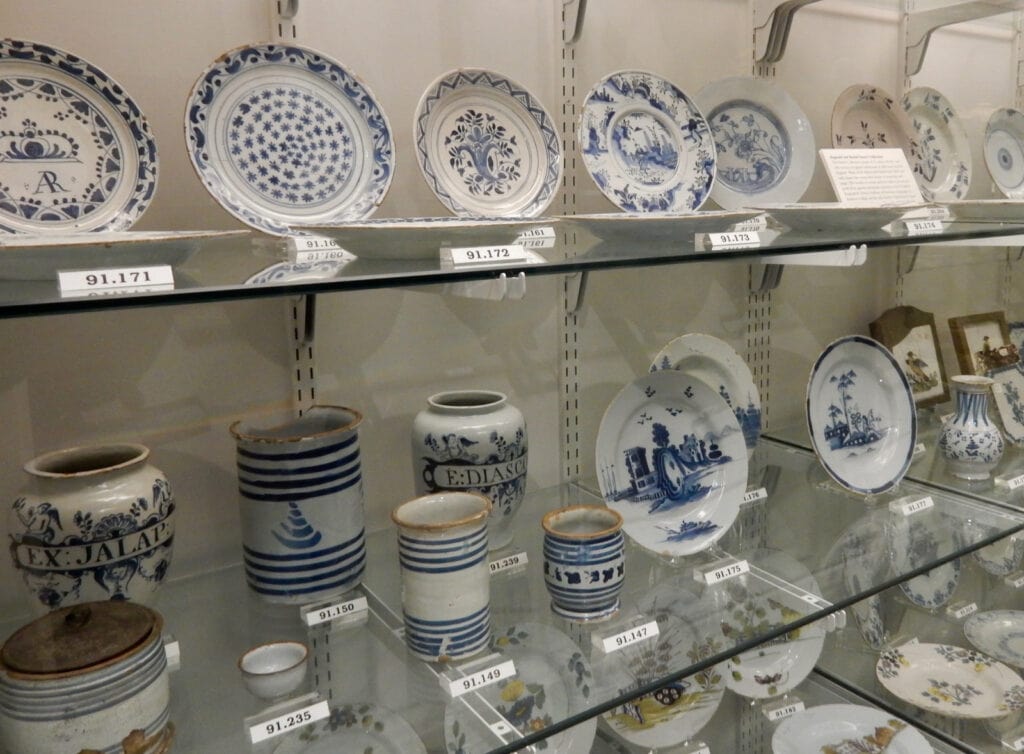
Though not original to the house, furnishings reflect what was available to a “River God” (Military, Ministerial, and Merchant “elites” in the Connecticut River Valley) at that time.
Delftware collectors might be impressed to find that Historic Deerfield owns one of the only remaining complete sets of “Merry Man” plates, on display in the Ashley House kitchen.
Before the Industrial Revolution, most home items were made in England, including cast iron pots, furniture, and ceramics.
Because this was farmland, however, residents did have access to oxen, which provided them with the “Tupperware of the day,” hornware, that could be heated and molded into plates and cups, just like plastic.
Here, guides discuss the political makeup of Deerfield during the mid to late 1700’s. The community was basically split 60-40 Patriot to Tory. Ashley was a Loyalist: a portrait of King George III hangs on his library wall.

Sheldon House – Self-guided
This 1755 home is dressed to impress, and is the “least touched” of all the Historic Deerfield homes. The plaster ceiling is far more upscale than the exposed timber in less lofty homes. And the dining table is set with food meant for a family of means: oysters, watermelon, tripe, stuffed cucumbers, and baked beans. The kitchen boasts a “modern convenience” – an improved hearth.
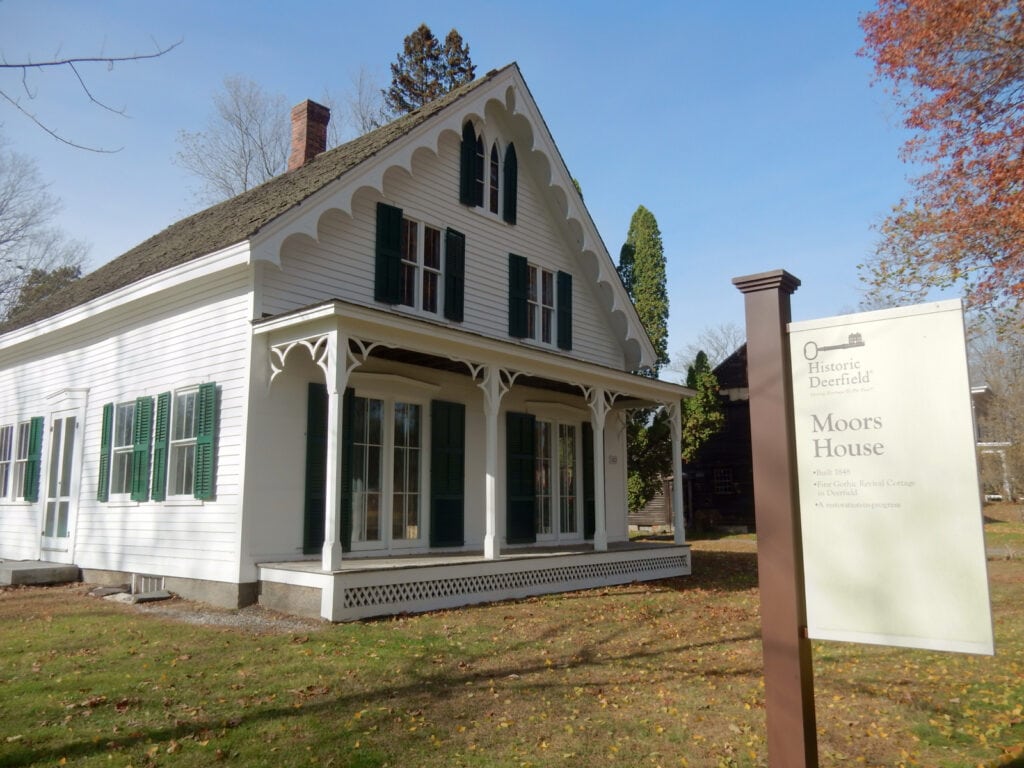
Moors House
First Gothic Revival Cottage circa 1848. Restoration in process.
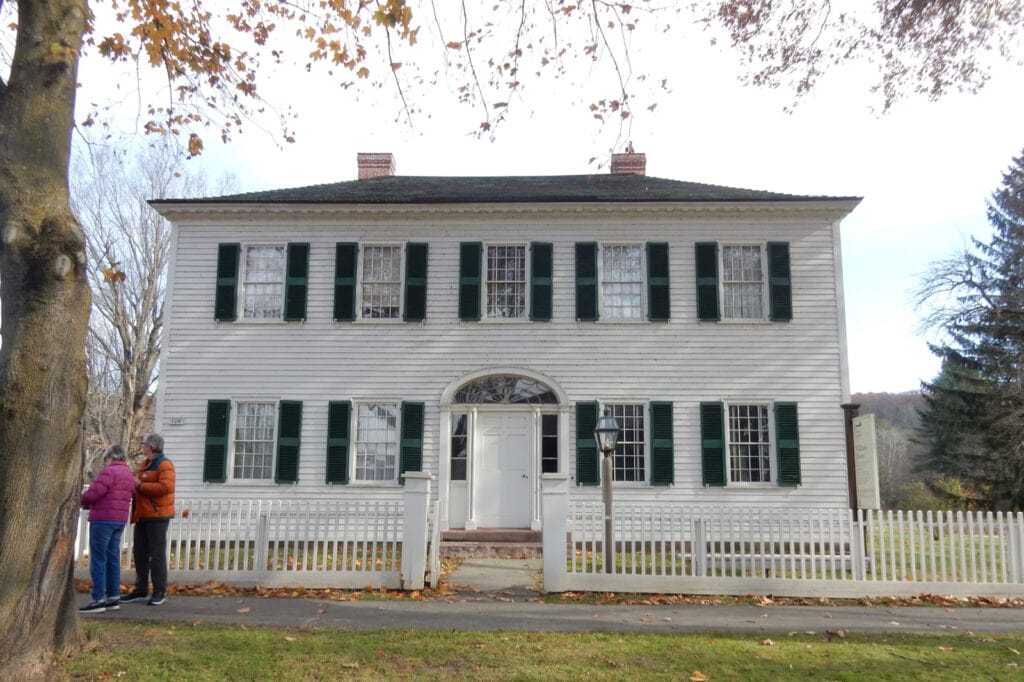
Williams House – Guided Tour
Built in 1730 with 4 rooms, the Williams House is a great example of one upwardly mobile Deerfield resident, Ebenezer Hinsdale Williams. Harvard grad farmer and landowner, Williams purchased this 4-room 1730 home from his mother, and in 1816, expanded it to 14 rooms “to reflect his status in life.”
Original hand painted French wallpaper of Venetian scenes and carpeting that completely covers the living room floor are indications of wealth.
In the dining room – the “Celestial Swag” wallpaper could very well appear in a contemporary wall-covering catalogue.
There’s a portrait done by hot artist of the day, Ruth Bascomb (whose work has become highly collectable).
In the big sunny kitchen, you’ll find an ingenious “Rotary Top wood-fire cook-stove.” Patented in 1832, it accommodated five cast iron kettles and eliminated the dangers of open hearth cooking.
Upstairs, discover the origins of women’s “pockets.” Worn around the neck or waist, these functional sewn purses allowed women to carry love letters, papers, and small merchandise while keeping their hands free.
Check out, too, finely made quilts on the beds. With slits on all corners, they were sewn to lay flat on 4-poster beds – a New England feature.
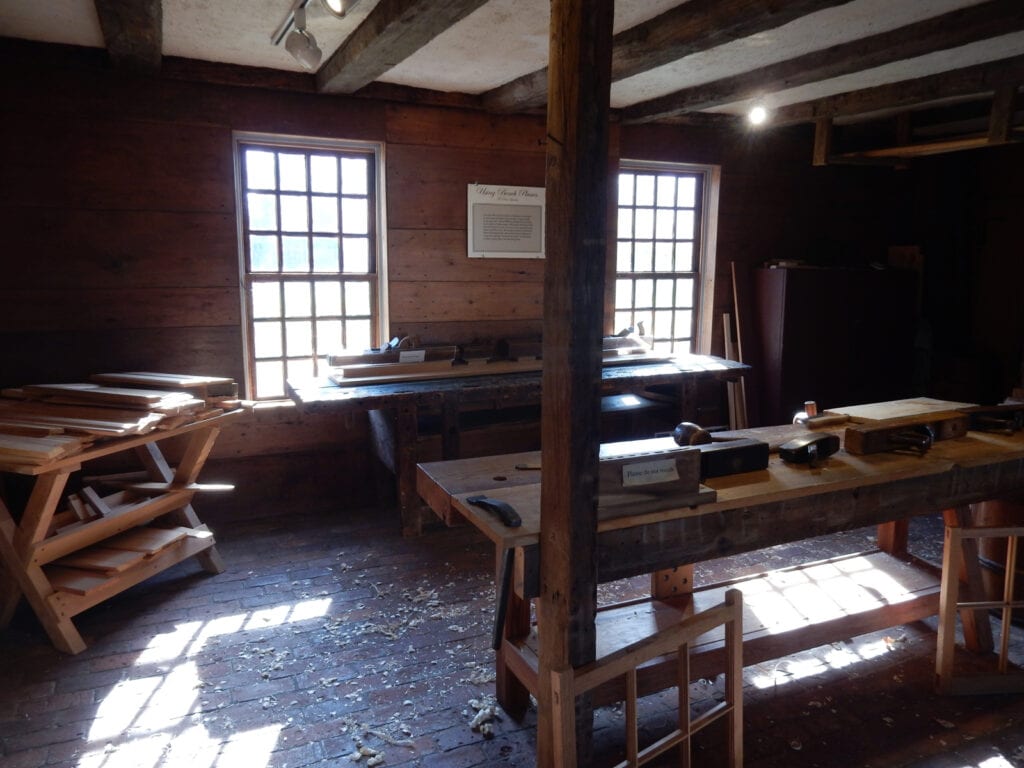
Apprentice House – Self-guided, and most fun
Play with dangerous tools (augers, rasps, coping saws), and watch potters and weavers at work (and then try your hand) in this pottery, woodworking, and weaving workshop.
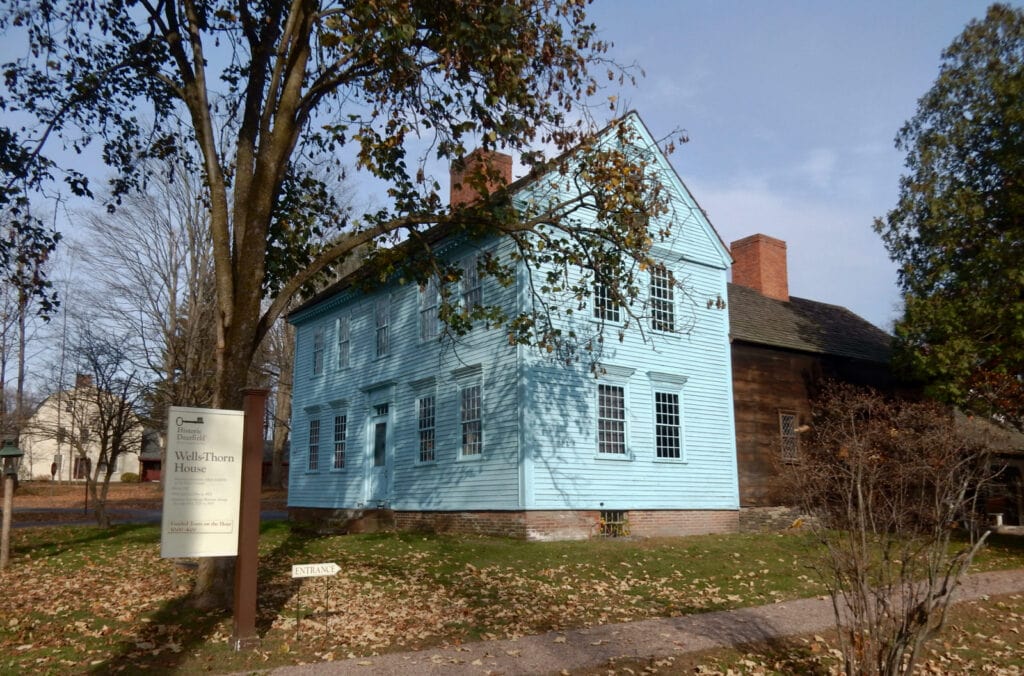
Wells-Thorn House (identified by powder blue exterior)– Guided Tours
Find out about the evolution of home design from 1725 through 1850 on this 30-minute “Walk through time.” This home does not tell the story of the people who lived here, but is a visual tutorial of how generations of residents would have lived in Deerfield.
In 1725, Deerfield families were still recovering from the 1704 attack. Though it was a poor town, this area of Massachusetts had one major advantage: fertile soil with no rocks (which is why the English wanted it in the first place).
Deerfield was a subsistence farming community, but due to hostile Native Americans, working the fields required armed guards. In the first barn-like 1725 room, bags of seed corn and other grains, hang from the ceiling, and tools, brought inside each night, line the wall.
By 1735, the economy picks up. Deerfield is sending farmed vegetables to the Caribbean via the CT River. A spinning wheel and bed indicate more domestic pursuits. Cooking technology improves, with a kettle bar that swings out from the fireplace. People can afford more luxuries like mirrors and brass candlesticks.
Sleepy Farm Town During the American Revolution
In 1775, though the Revolution stirs the country, Deerfield stays a relatively “sleepy” farming town. But fat cows make fat cats of those who raise them. Deerfield is known far and wide for its beef. So, home décor upticks to plaster and wainscoting on walls, four-poster beds, and interior shutters to control temperatures.
The year 1800 brings narrower floorboards, bold colors (blue exterior, salmon interiors), and neo-Classical architectural elements – echoing the shapes of Greece and Rome in our new Republic. Deerfield Academy opens in 1797, bringing a new type of resident to the town: students.
By 1815, the War of 1812 all but wipes out trade with England. Federal style furniture comes into vogue. Blue and white tulle material made on site (shown in this room as a bed canopy), comes to identify the town.
Famous Deerfield Society of Blue and White Needlework
Those who weave it are deemed members of the Deerfield Society of Blue and White Needlework (DSBWN). This distinctive blue and white material puts Deerfield on the fabric-arts map, boosting the economy further. By the 1880’s, the DSBWN advertises in women’s magazines such as McCalls and Ladies Home Journal.
In 1835, Deerfield remains “sleepy,” but the Industrial Revolution in larger cities changes the face of manufacturing. Furniture styles morph from clean Federalist to Empire-“chunky.” Mass-production makes home furnishings cheap and easy to purchase.
The 1850 room is actually the attic, which provides a look-see at how houses were built in the 17th and 18th centuries replicating shipbuilding techniques.
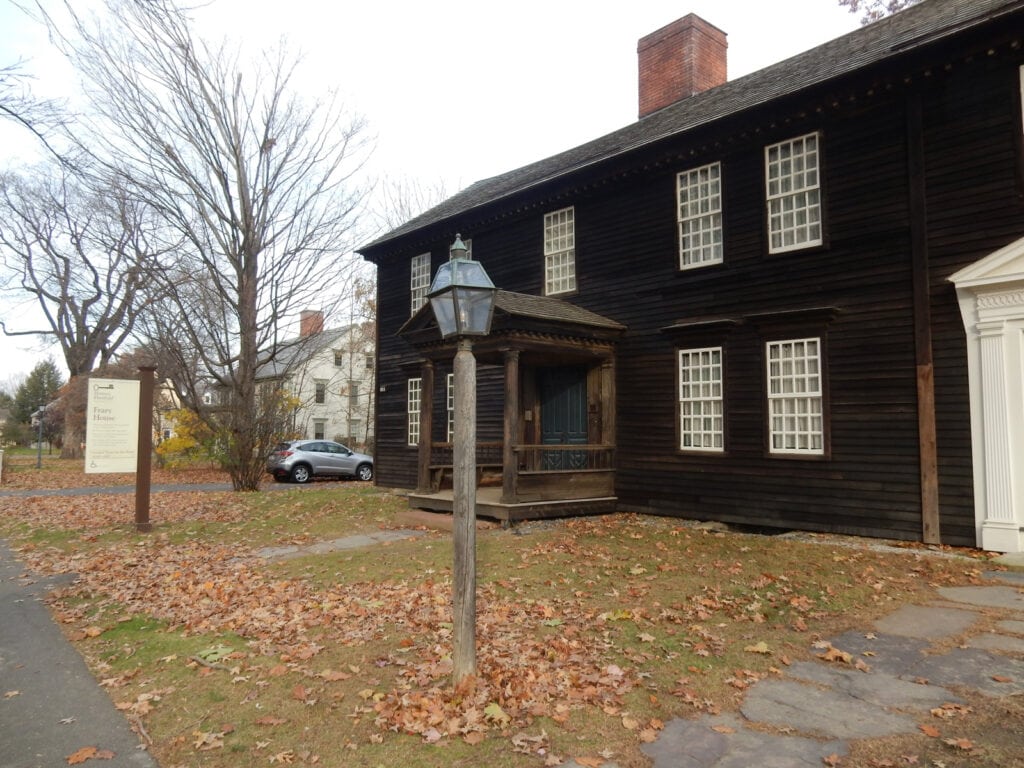
Frary House – Guided Tour
First built in 1760, Frary House fell into decline until it was lovingly restored in 1892 by preservationist, Charlotte Alice Baker, a descendant of the Frary and Stebbins families. Apparently, the building was so derelict; tobacco plants were growing in a back room.
Though she lived on the North Shore, Baker had the energy and wherewithal to travel the world and participate in momentous events, including the nomination of Abraham Lincoln at the Republican Convention.
She was passionate about Colonial Revival and the Arts and Crafts Movement, thus the Frary House is interpreted through Baker’s exacting eyes. A spitfire with firm opinions, she was known to have driven some tradesmen crazy.
To whit – though the fireplace in the large cook’s kitchen was never used, Baker wanted it to appear soot stained. She purchased black bricks and handed them, one by one, to her mason while instructing him on their placement.
What possessed this sophisticated world traveler to take on this task in a remote farming village? Three things, according to her letters: 1. To restore the house; 2. As a summer home for her mother; and 3. To dance.
Dance?? Well, in 1795, the Barnard Tavern and Ballroom had been added to the home (now undergoing restoration), and Baker did indeed dance, during her big End of Restoration Party, in the grand – soon to be grand again – space.
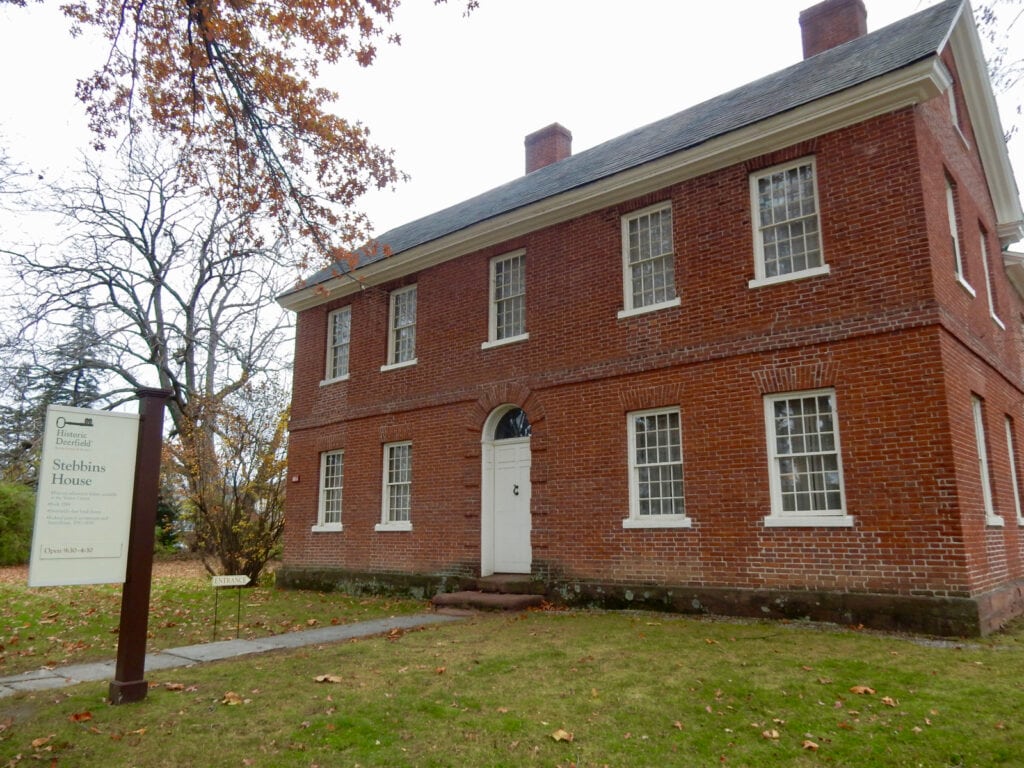
Stebbins House – Self-Guided
Asa and Emilia Harvey Stebbins moved into this stately brick Federal “trophy house” in 1799 with their 13 children. Owners of a gristmill and sawmill, they were among the wealthiest and most respected in the Deerfield community.
On exhibit are Empire style dressing gowns, Federal and Neo-Classical furniture, and, the most thrilling element – an Asher Benjamin designed flying staircase.
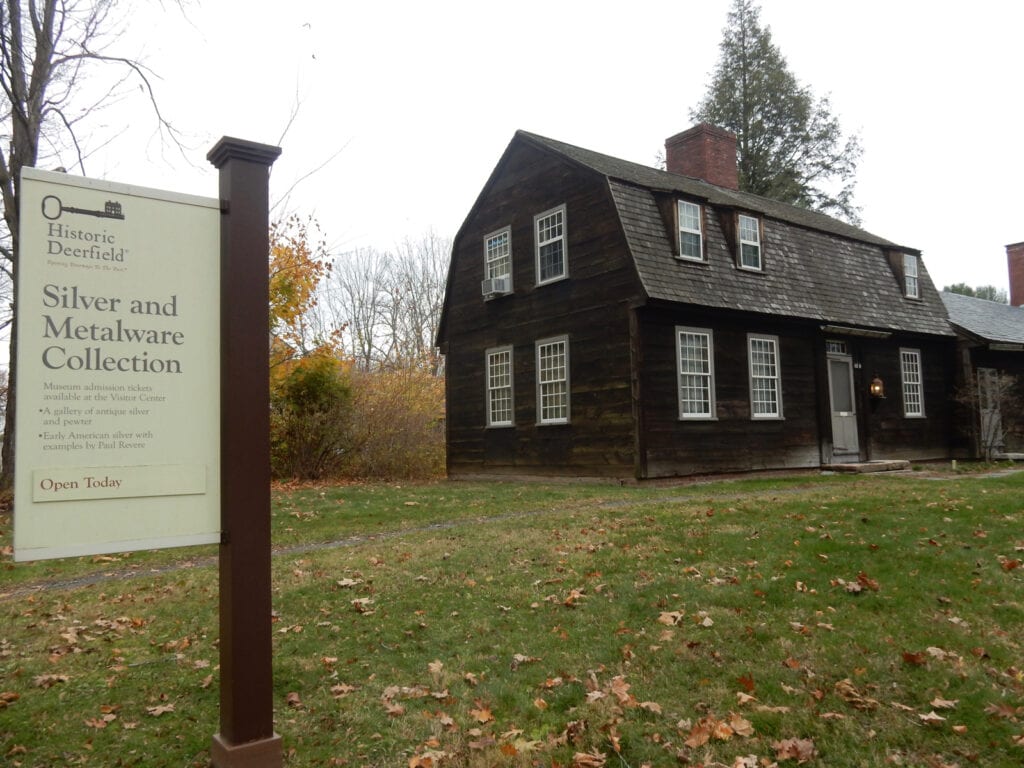
Silver and Metalware Collection – Self Guided
Set up like a silversmith shop, this mini-museum displays a chronological “tour” of silver pieces from the late 1600’s to early 1800’s, brought from England, and then, post Revolution, made in Boston, New York, and Philadelphia.
Docents are knowledgeable about eras of silver design. In the late 1600’s – early 1700’s, silversmithing was decorative and tedious. But by the mid 1700’s the plainer Queen Anne style, with nods to nature – apple-shaped tea pots, for example – became the rage.
In post-Revolution late 1770’s – early 1800’s, manufactured sheets of silver greatly reduced labor. Neo-Classical stamping and beading prevailed.
While silver pieces take center stage here, other items are just as compelling. Ask to see the receipt of a silver tankard purchased by “Barnard” and signed by Paul Revere.
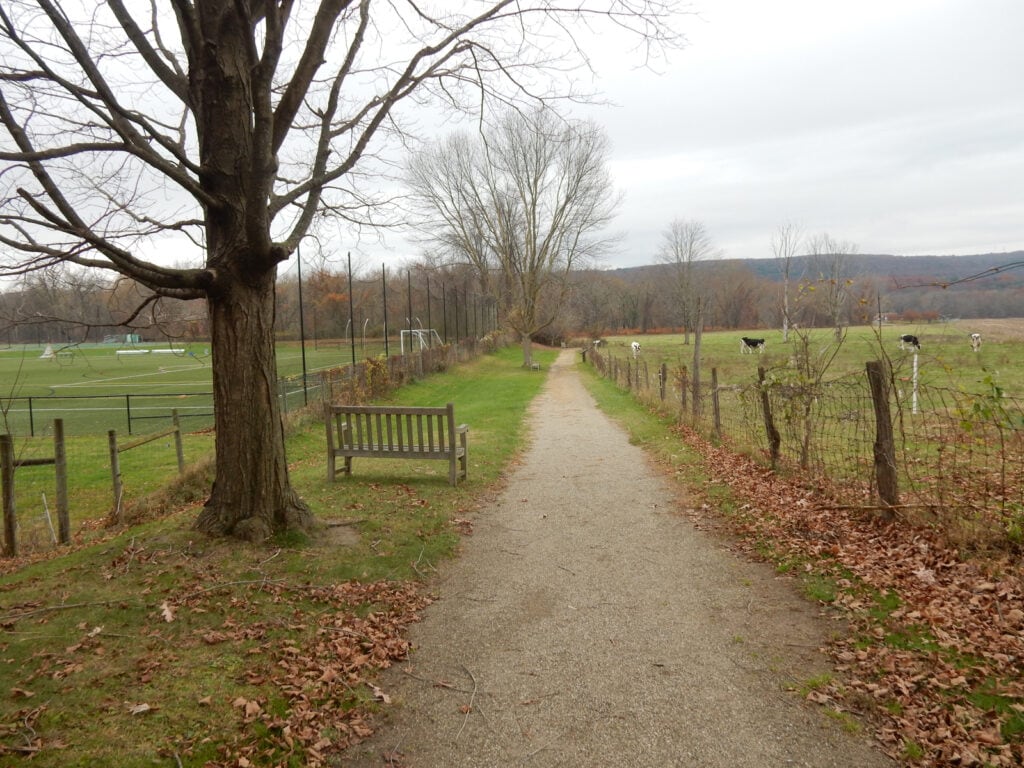
Channing Blake Footpath
This 1/3 mile trail leads you between farms, cow pastures, and Deerfield Academy athletic fields (quite a strange juxtaposition) to the banks of the Deerfield River.
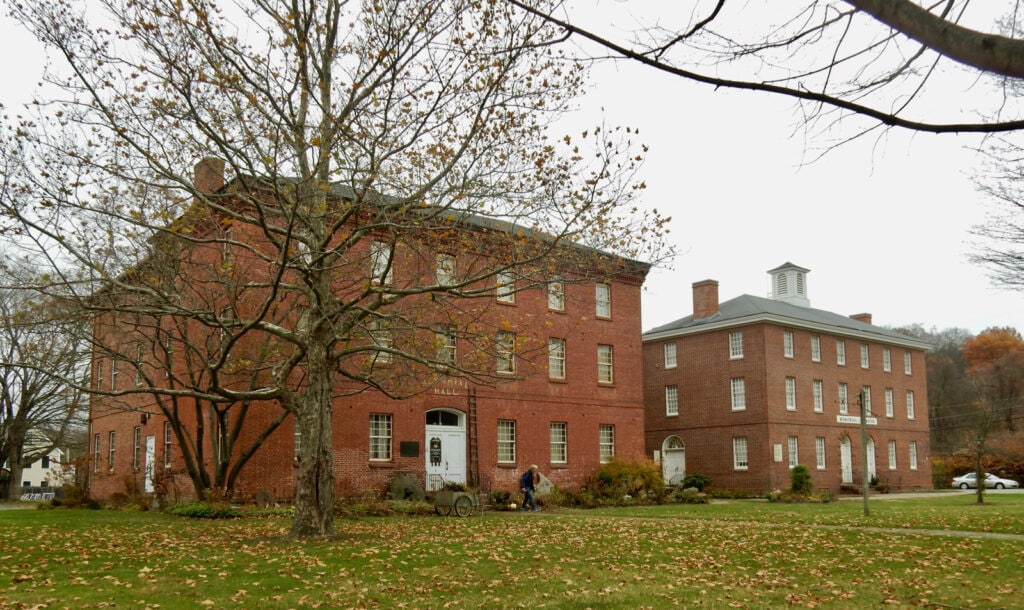
Pocumtuck Valley Historical Association
Located in the original 1797 Deerfield Academy building (next door to the Library), the local Pocumtuck Valley Historical Museum houses the Indian Door: the only existing remnant from the 1704 Deerfield Raid.
All who hid out in that house survived the attack, except for one woman who was shot standing right behind the door. Most of the artifacts in the museum come from Deerfield descendants who were taken to Canada.
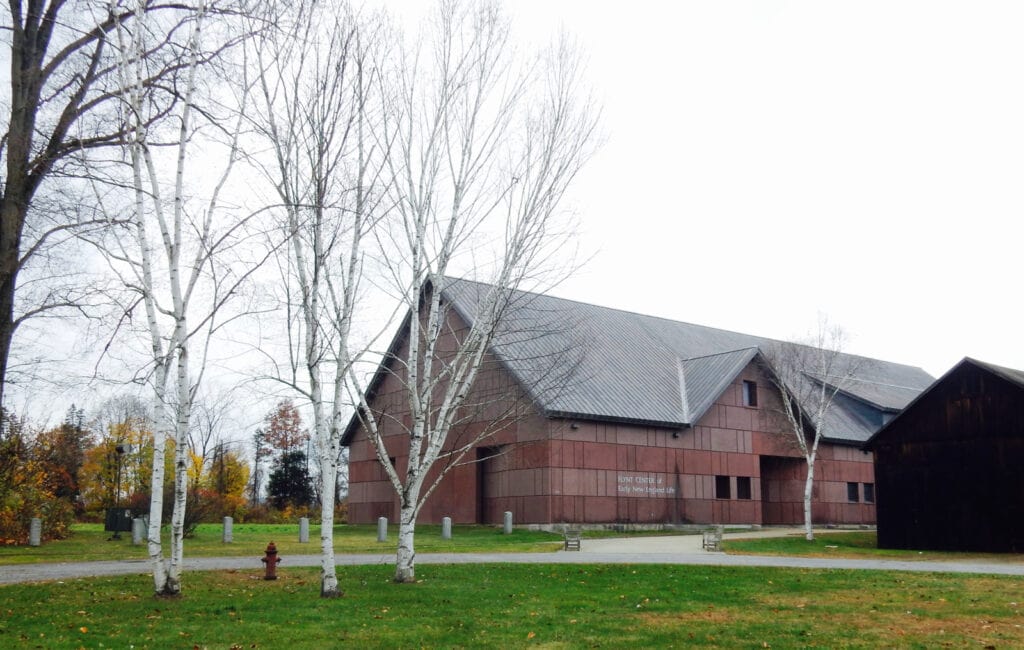
Flynt Center of Early New England Life – Self-Guided museum
The Flynt Center of Early New England Life is the only Historic Deerfield building open during the winter months (weekends only), but it’s a doozy. Considered “Deerfield’s Attic,” this two story contemporary museum houses furniture and clothing collections and one of the country’s largest collections of Revolutionary War era Powder Horns.
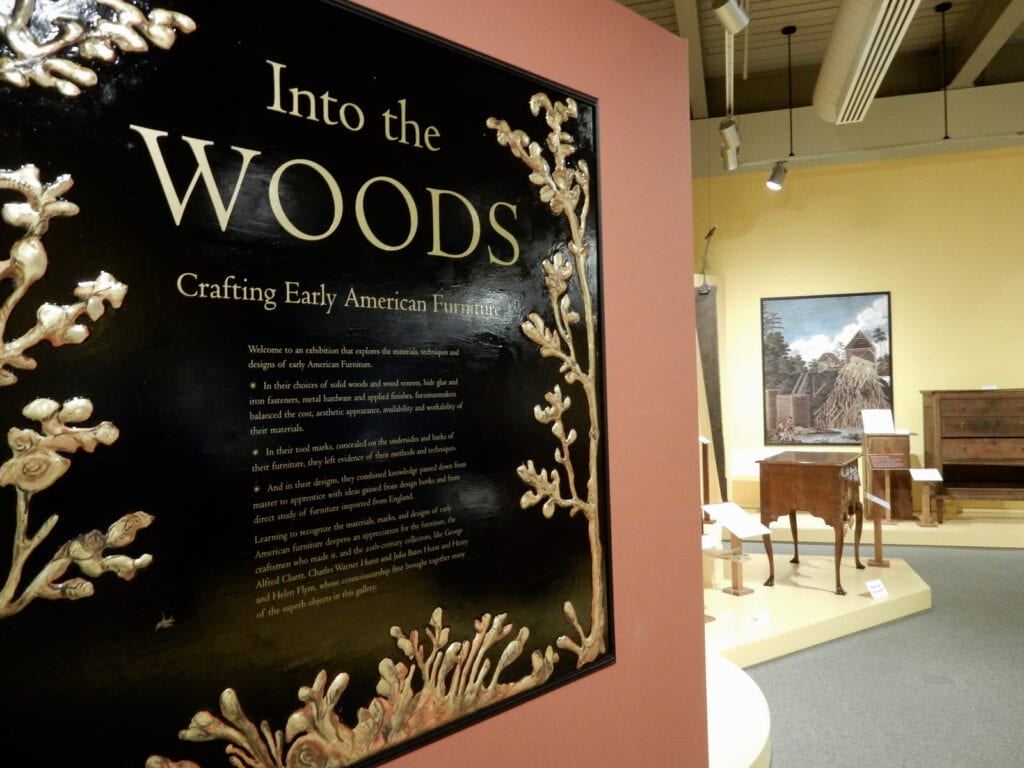
Start in the “Into the Woods” gallery, showcasing tree-to-finished-product process of furniture making. There are stunning examples of chests, desks, tables, chairs, and sideboards in variety of rich woods.
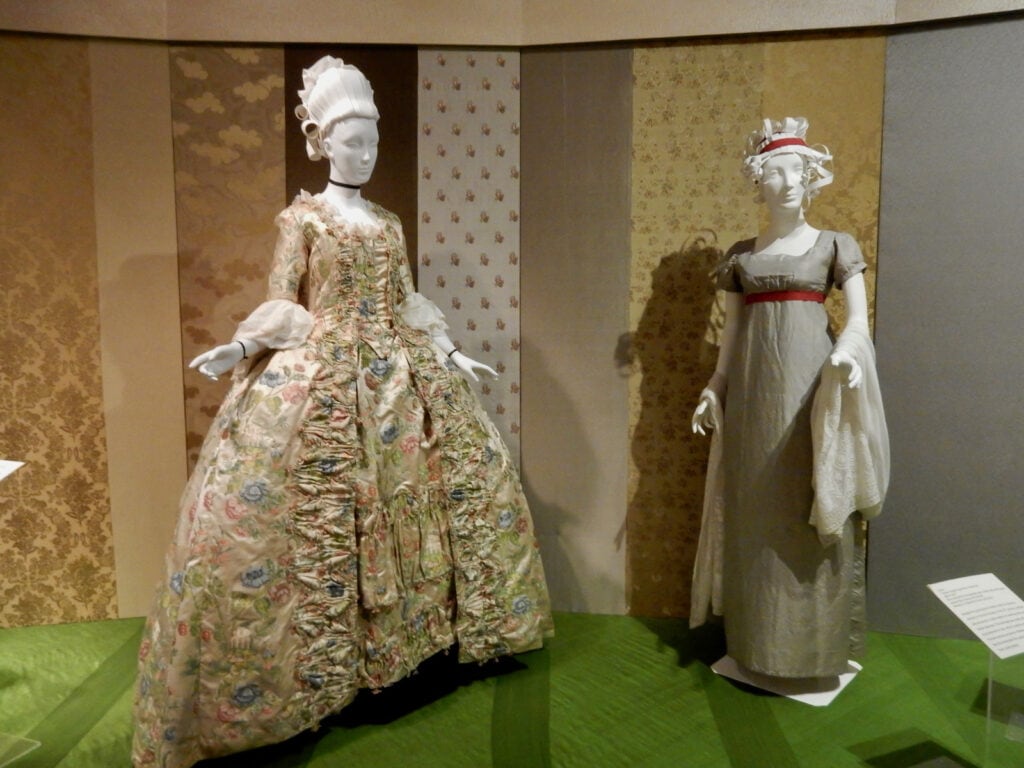
Classical music soothes visitors in the Textile Gallery where you’ll find fashions of various eras made of silk, cotton, linen, and wool – Britain’s singlemost export from the 10th century until the end of the 18th.
Interestingly, the domestic factory that produced the wool for George Washington’s 2nd inaugural suit failed due to the superior quality and low price of British imports.
“Viewable Storage”
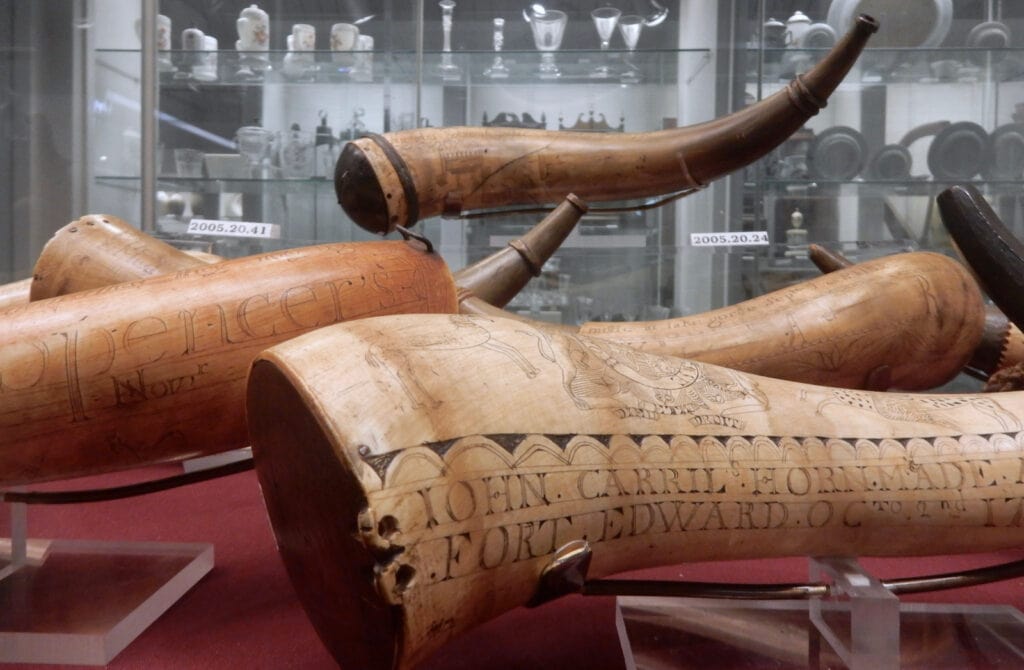
The whole second floor consists of “Viewable Storage” – glass case upon case of ceramics, furniture, paintings, pewter, silver, and other esoteric home furnishings and accessories. You have to take it slow, though.
What at first seems like a maze of glass cases cluttered with stuff becomes, upon close inspection, a repository of skillfully made, sometimes-weird, artifacts.
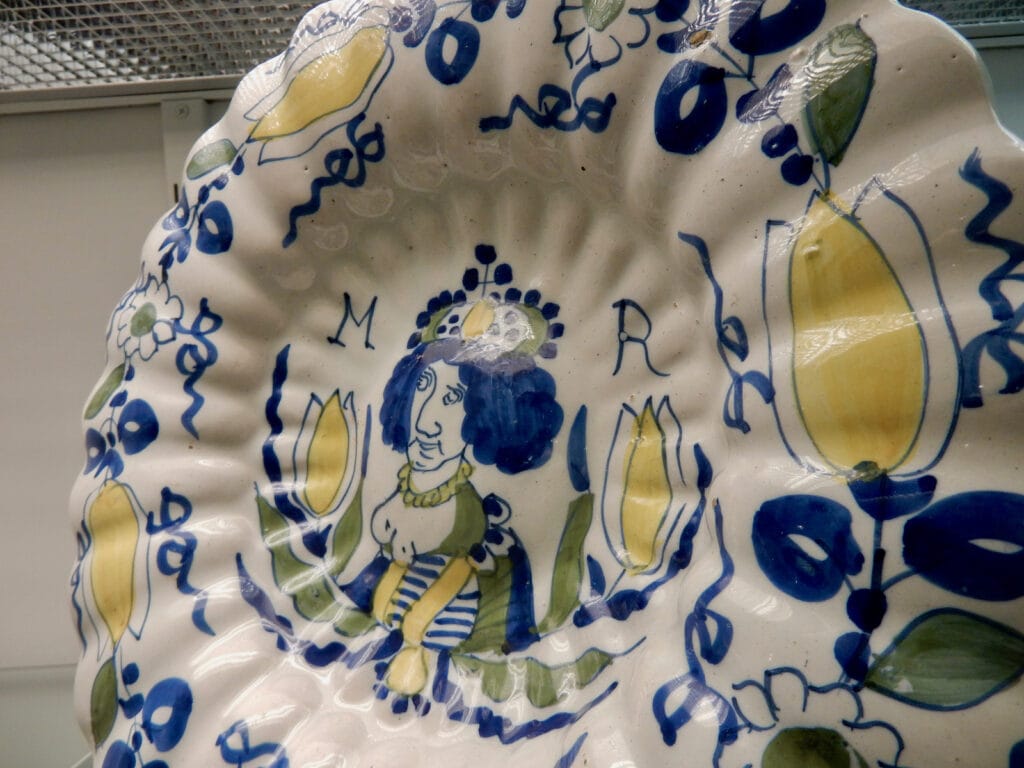
My eyes settled on a plate painted with the figure of a cock-eyed woman, bare breasts spilling from her dress.
Looking the piece up in the museum’s on-line archives, I discovered that this naughty glazed earthenware Dutch dish, with its depiction of Mary II, wife of William of Orange, dates from between 1689-1694.
It was, mentioned historians, an example of either bad painting skills or a caricature of the Royal Family. Either way, it seemed pretty risqué for a 300 plus year old artifact.
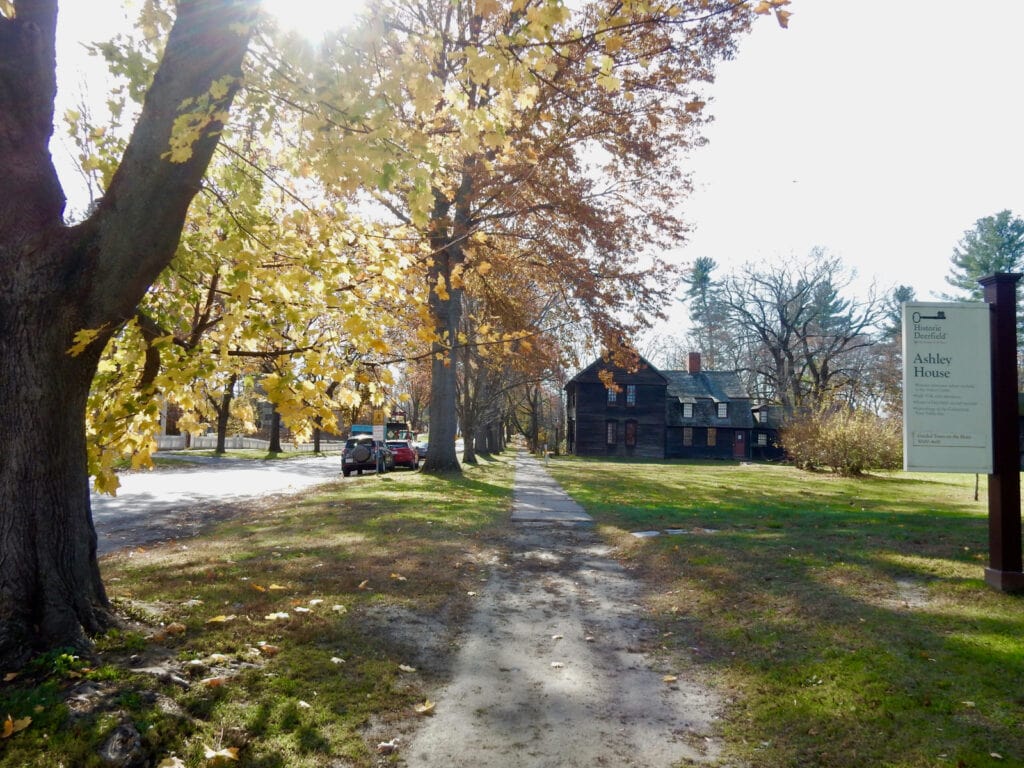
In season (April – December), entry to Historic Deerfield costs a pittance (check website for entry fees): a bargain for all of the tours, workshops, events, and programming that goes on throughout the year. Although homes are closed off season, the Flynt Museum remains open.
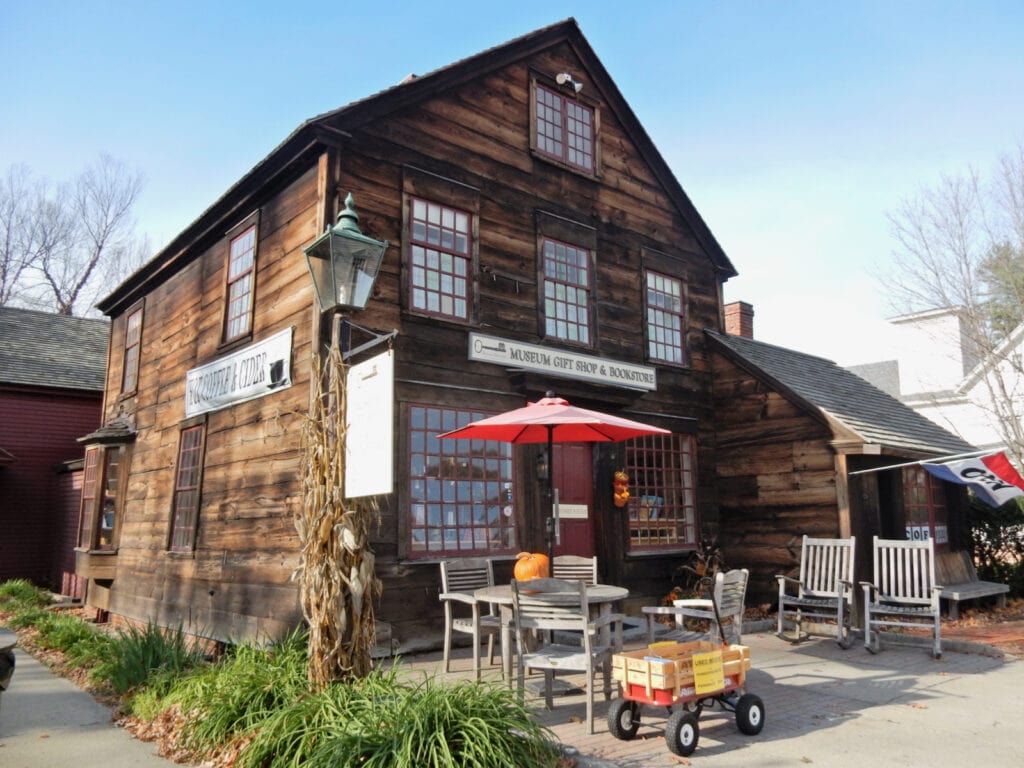
SHOP: Museum Gift and Bookstore
This larger than it first looks shop is strewn with items you’d find throughout Historic Deerfield (minus Powder Horns). Grab a cup of tea or hot cider and muffin for a mid-day snack.
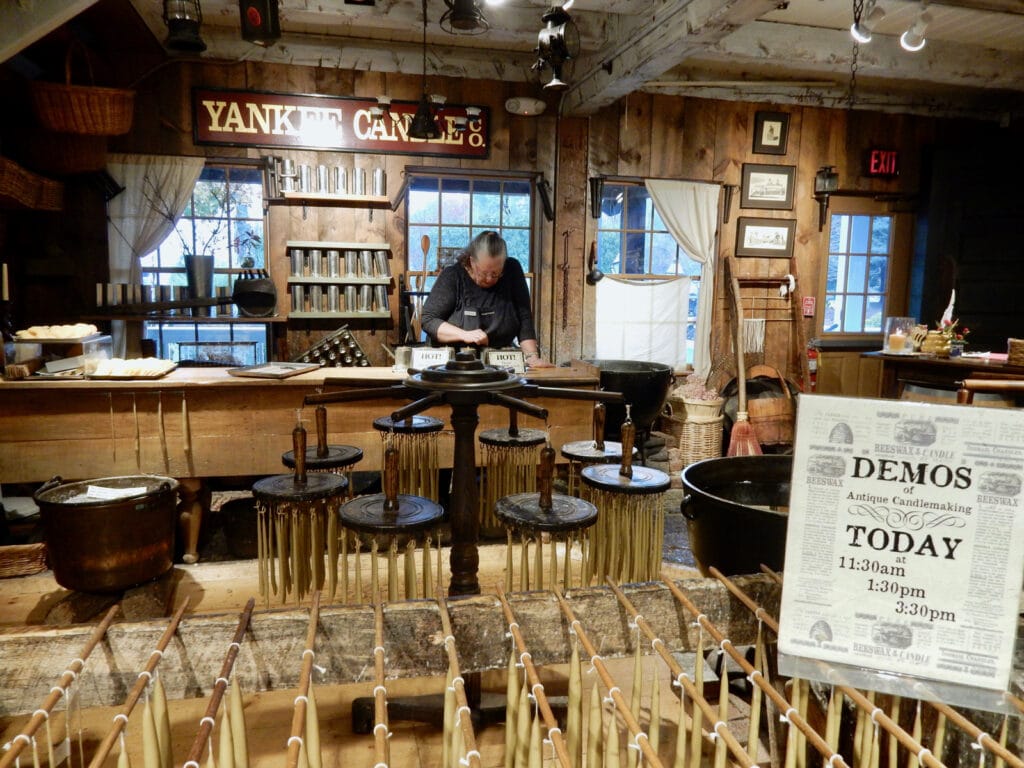
SHOP: Yankee Candle Village
You’ve gotta visit the original Yankee Candle Village – even if you’re not into those sweet-smelling jars of wicked wax. Just off Exit 25 of I-91, visit either before or after (or, sure, during) your trip to Historic Deerfield.
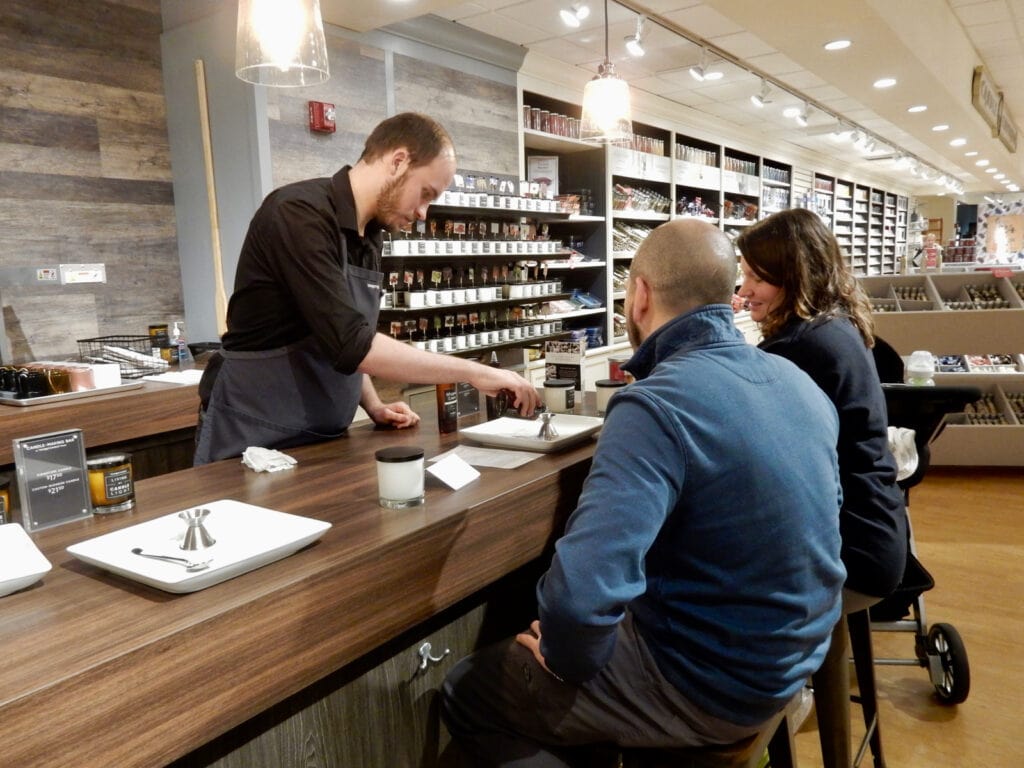
This pungent-candle company has spawned an entire city of gifts, clothing, and doo-dad shops. A mash-up of Willy Wonka, The Polar Express, Santa’s Workshop, Vera Bradley, jewelry store, museum, toy shop, Farmer’s Market, Build A Bear, Make Your Own Custom Candle and Wax Hands; that in one room puts you inside a snow globe – well, if you’re thinking “quick stop,” good luck to you.
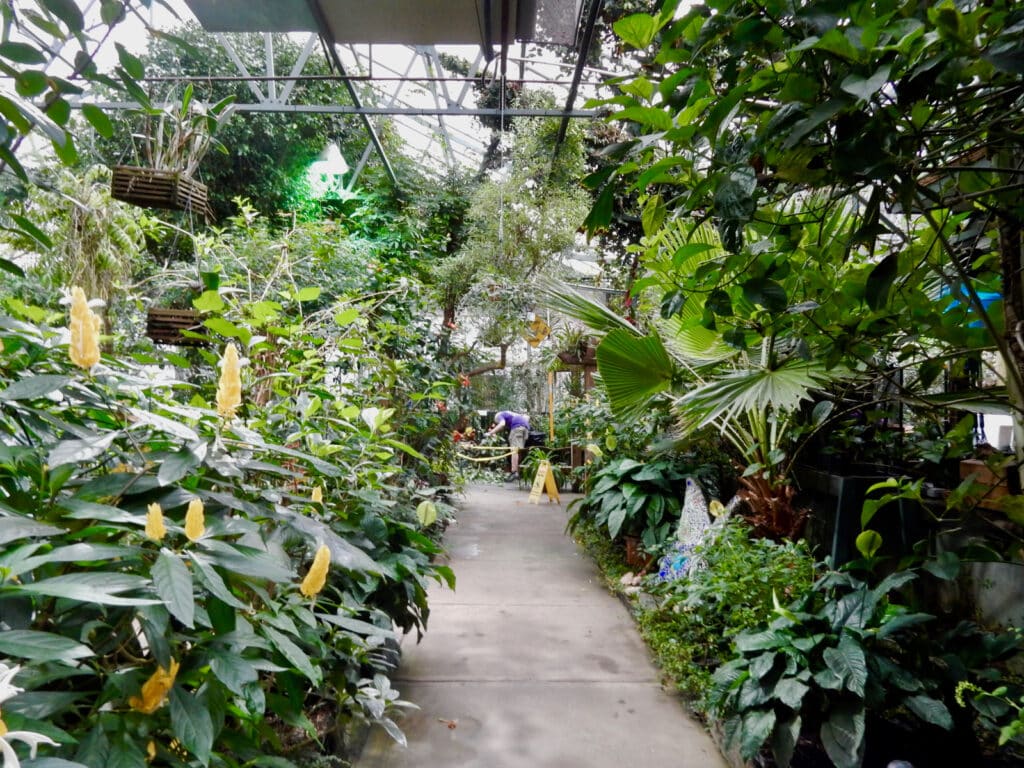
GO: Magic Wings Butterfly Conservatory and Gardens, 2 miles from I-91 on Route 5/10 and 5 miles from Historic Deerfield
Find butterflies dull to luminous in the wondrous Magic Wings Butterfly Conservatory and Gardens. I’ve never seen so many young children captivated, to the exclusion of everything else, by these beautiful winged creatures.
Even five year olds wait patiently for them to alight. Wind around an indoor terrarium, with piped in classical music and benches for sitting and take it all in. Check website for hours and entry fees.
Where to Eat and Stay in Historic Deerfield MA
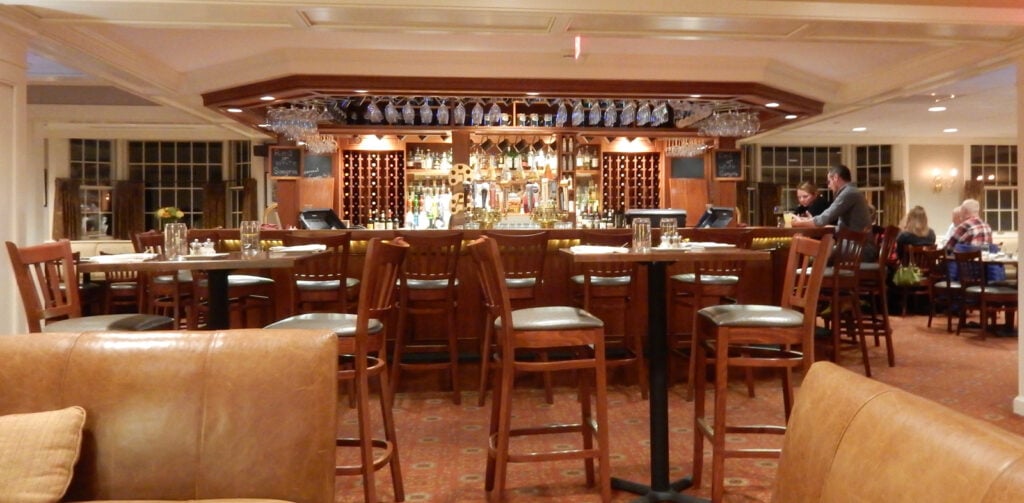
EAT: Champney’s at Deerfield Inn
(See Below Under Deerfield Inn)
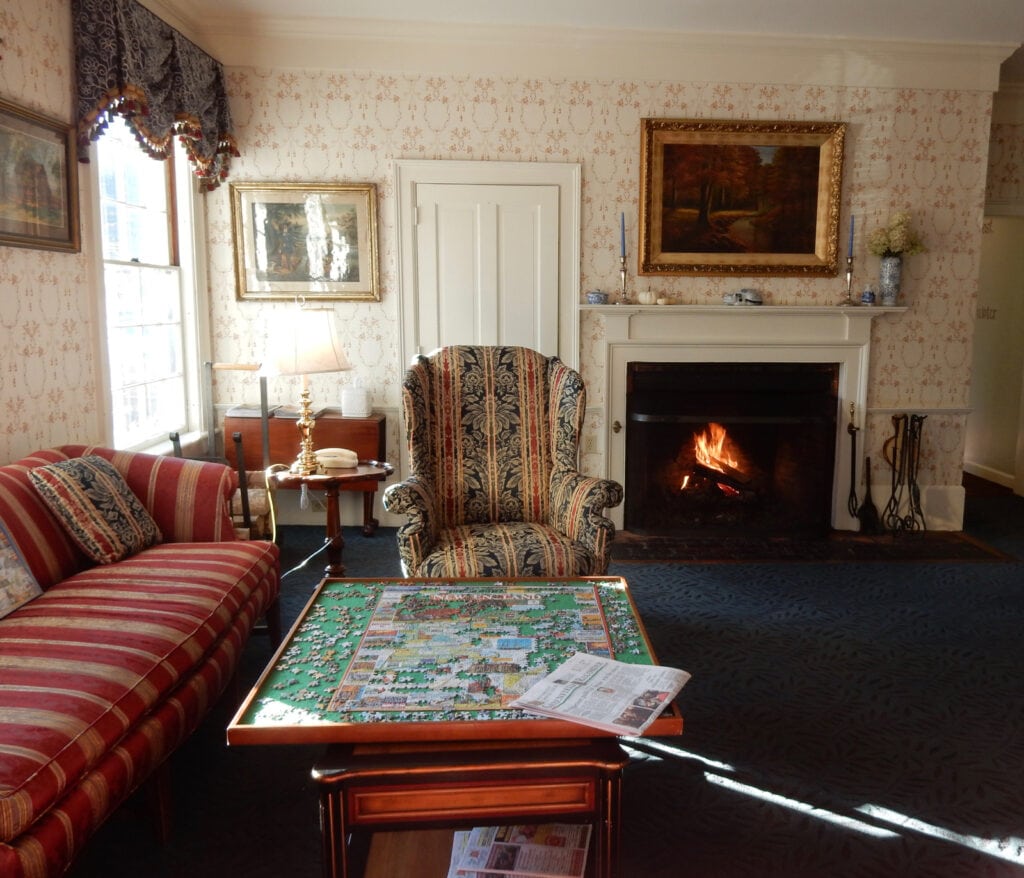
STAY: Deerfield Inn
Anyone with a love of American History – or who just enjoys historical luxury – will find a tranquil temporary home at the 24-room Deerfield Inn in Historic Deerfield MA. Drive a few miles down Route 5/10, turn left onto Old Main St., and imagine you’ve gone through a time portal to America’s early days.
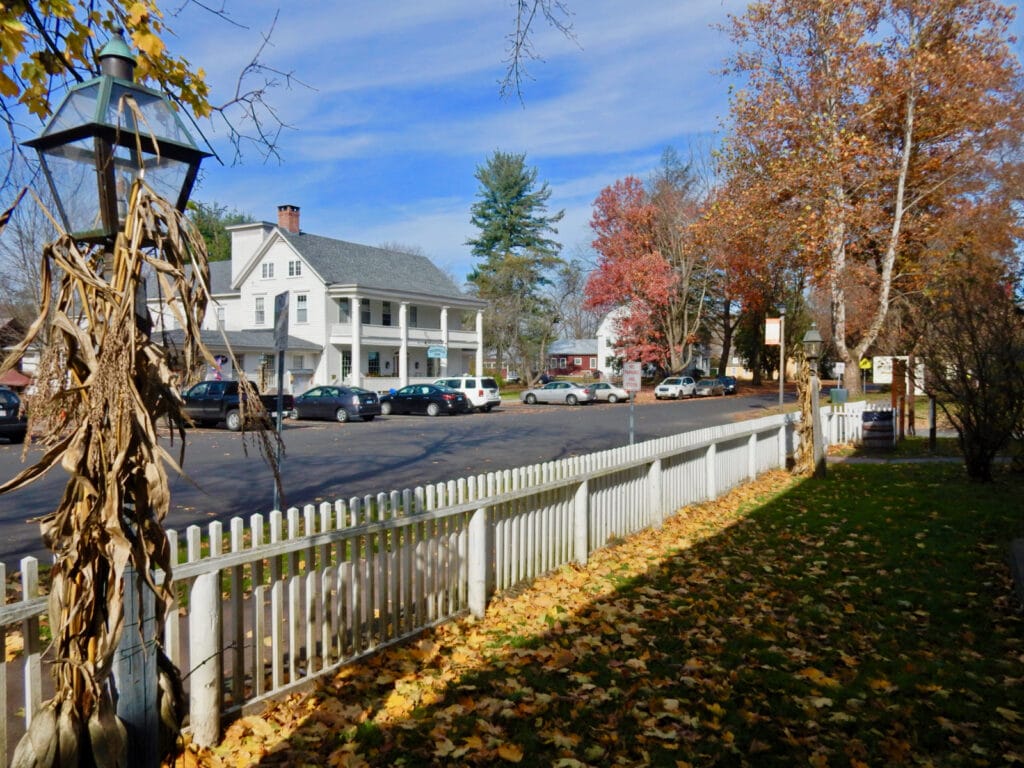
The Deerfield Inn, first opened in late 1800’s, continues to update and refresh rooms, without messing with its charming Colonial atmosphere. And that charm extends to the very friendly staff of both the inn and in-house restaurant, Champney’s.
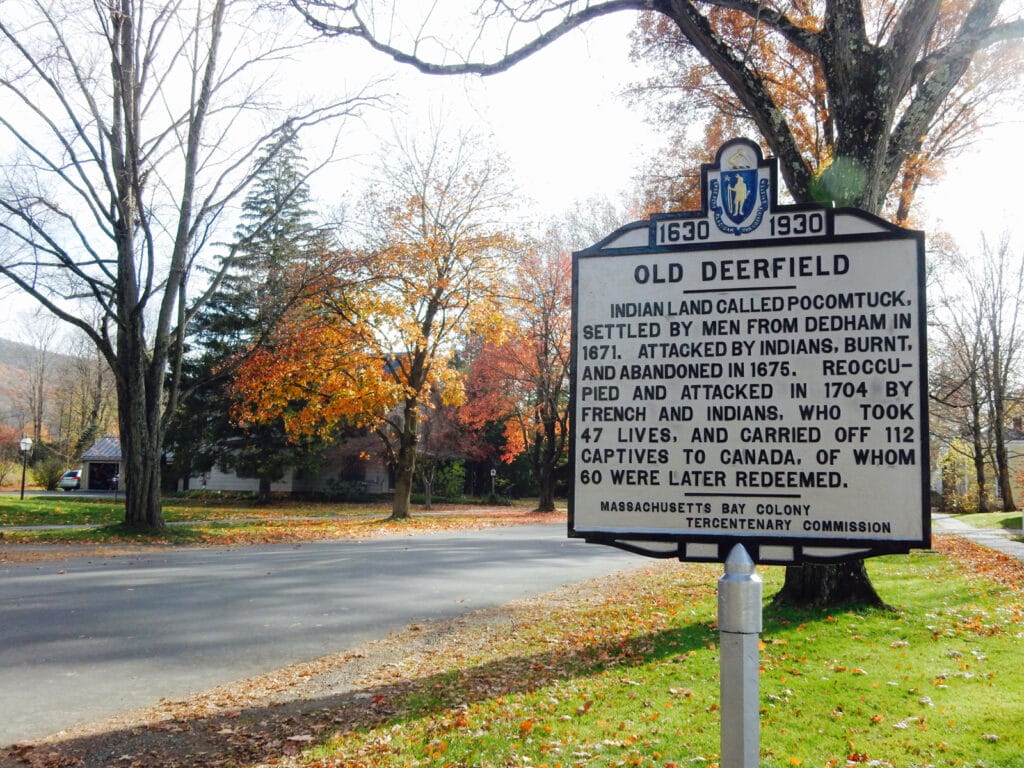
If you intend to explore the homes and museums of Historic Deerfield, why restrict your trip to just one day? This historic B&B is the opportune place to luxuriate overnight. Right across the street from the Visitor’s Center, you can have a leisurely breakfast and get there exactly when it opens at 9:30am.
First Impressions of Deerfield Inn
On cool days and nights, the soothing odor of wood smoke wafts through the air. You smell it even before you walk into the welcoming lobby, warmed by a roaring wood fire. On one cocktail table, surrounded by a couch and upholstered wingback chairs, sits a half-completed 1,000-piece puzzle, inviting guests to sit for ten, twenty minutes – or several hours.
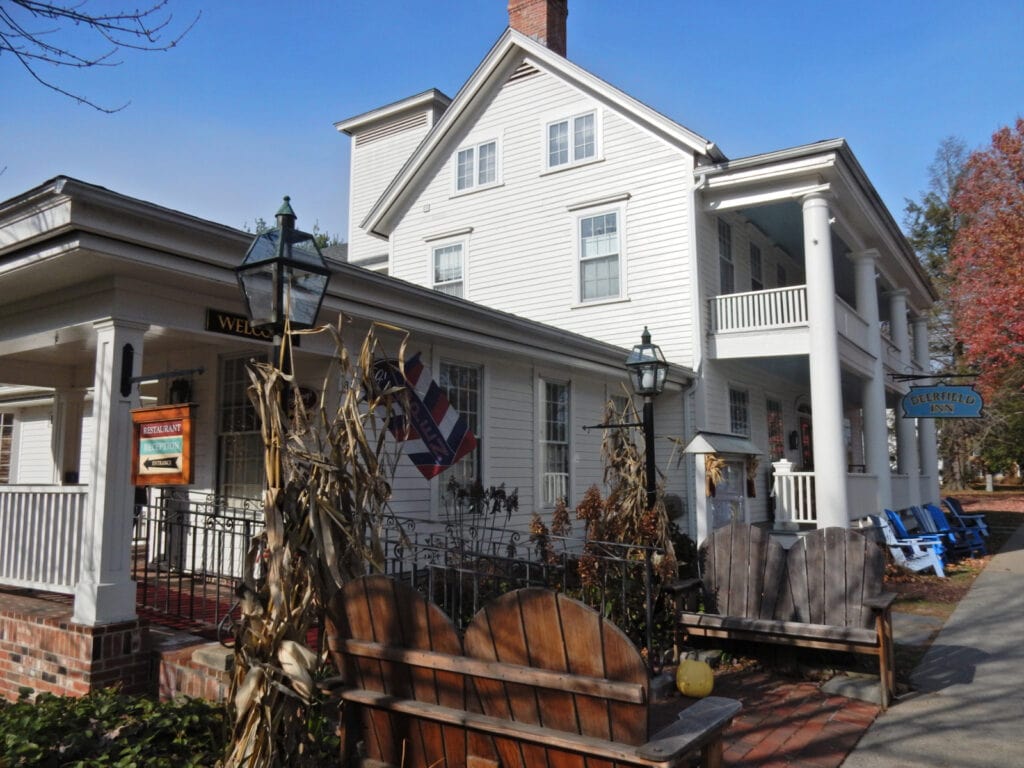
The Deerfield Inn is comfort food for the traveler’s soul. You’ll find old-fashioned etiquette, like conversing with fellow travelers, easy here. Guests gather in the living room for complimentary tea and cookies every afternoon, and even shy strangers start chatting while attempting to fit another puzzle piece in place.
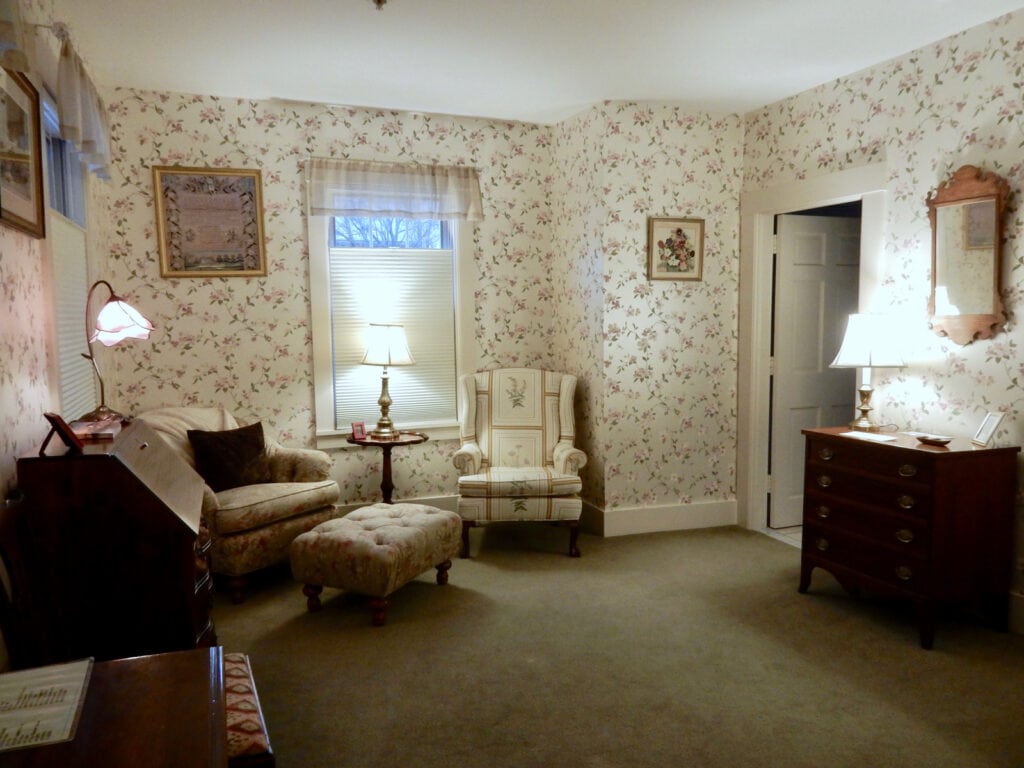
After the museum houses close, there’s really nothing else to do but snuggle up with your honey, enjoy the lobby’s fire, or have a drink at the bar with friends.
Dining at Champney’s Deerfield Inn

The 18 seat three-sided bar is nearly filled with locals on a cold November Tuesday night. I’ve been told it rocks on weekend nights. Throughout the week this Deerfield fixture is a homey refuge on a cold and rainy day. Choose a seat by the fireplace, in the handsome tavern room, or in the more formal dining room.
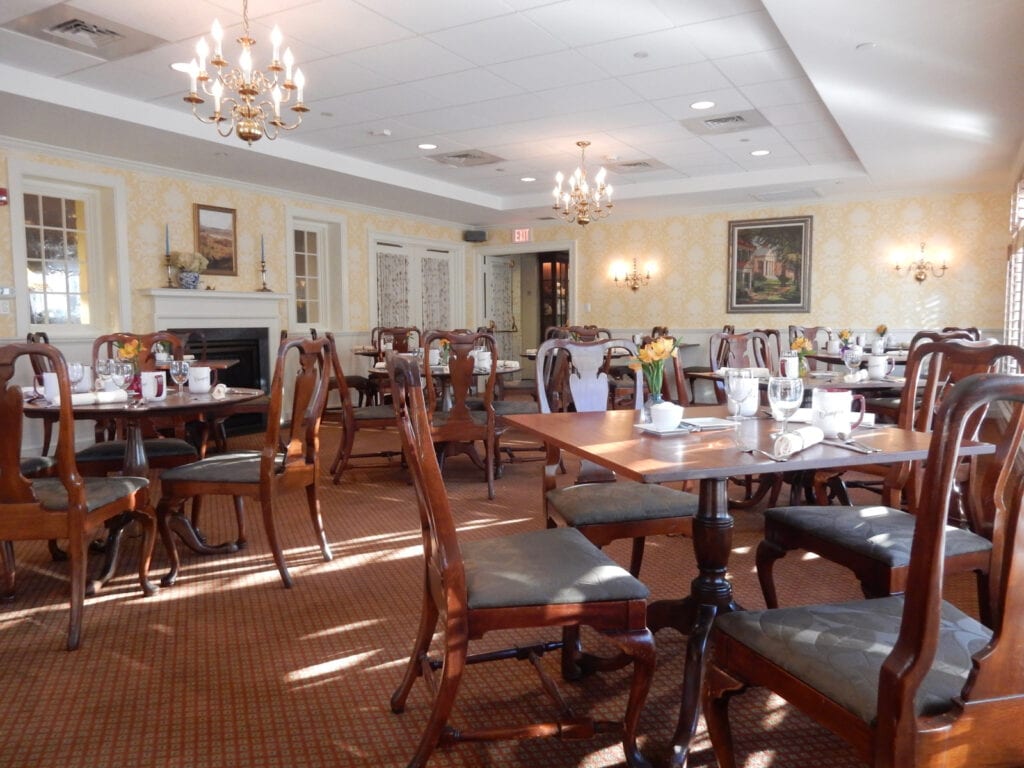
Champney’s, named after a Deerfield resident artist who happened to be the first Art Teacher at Smith College, is thankfully the best place to eat in the area. That’s partially because it’s the ONLY place to eat in Historic Deerfield, but also because it’s very good.
Yes, you are not on the coast. But this is Massachusetts – so get the delectable thick and creamy New England Clam Chowder to start. I made a meal of that plus the amazing Flash-Fried Brussels Sprouts with Sweet and Spicy Maple Aioli and pungent Truffle Fries. Other diners were “mmm-ing” over Champney’s Fish and Chips and chicken dishes.
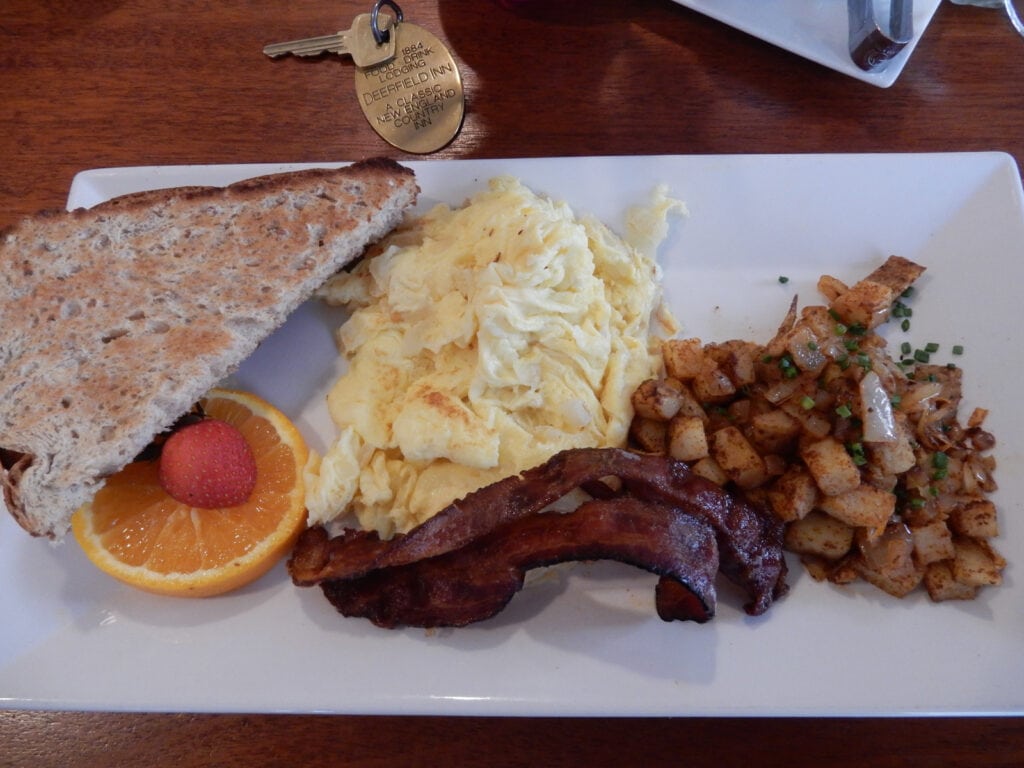
A cooked to order hot breakfast comes with the room. Whatever you ask for – eggs, potatoes, bacon – comes beautifully plated. Try the homemade raspberry jam from a farm up the road.
Rooms at Deerfield Inn
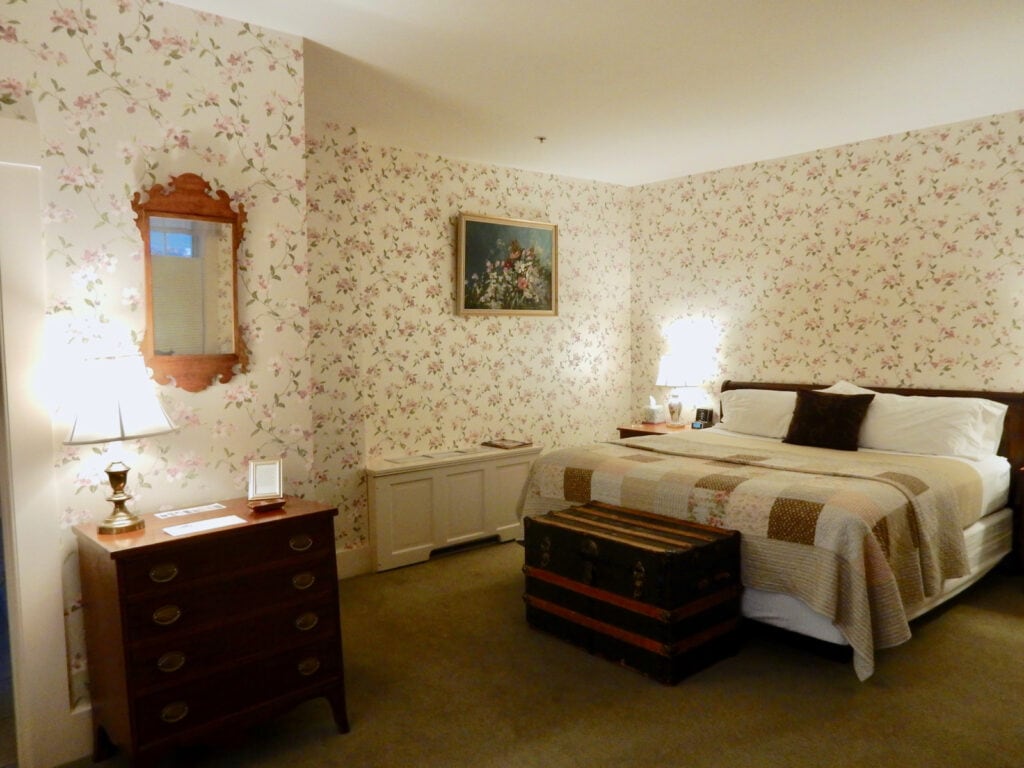
Laura Ashley cozy rooms recall a simpler time (but with flat screen TVs). Floral wallpaper, tufted upholstered chairs, antique furniture, quilted bed coverings, cool, soft sheets: It’s a New England aesthetic falling out of favor everywhere but in rural New England, and therein lies its appeal.
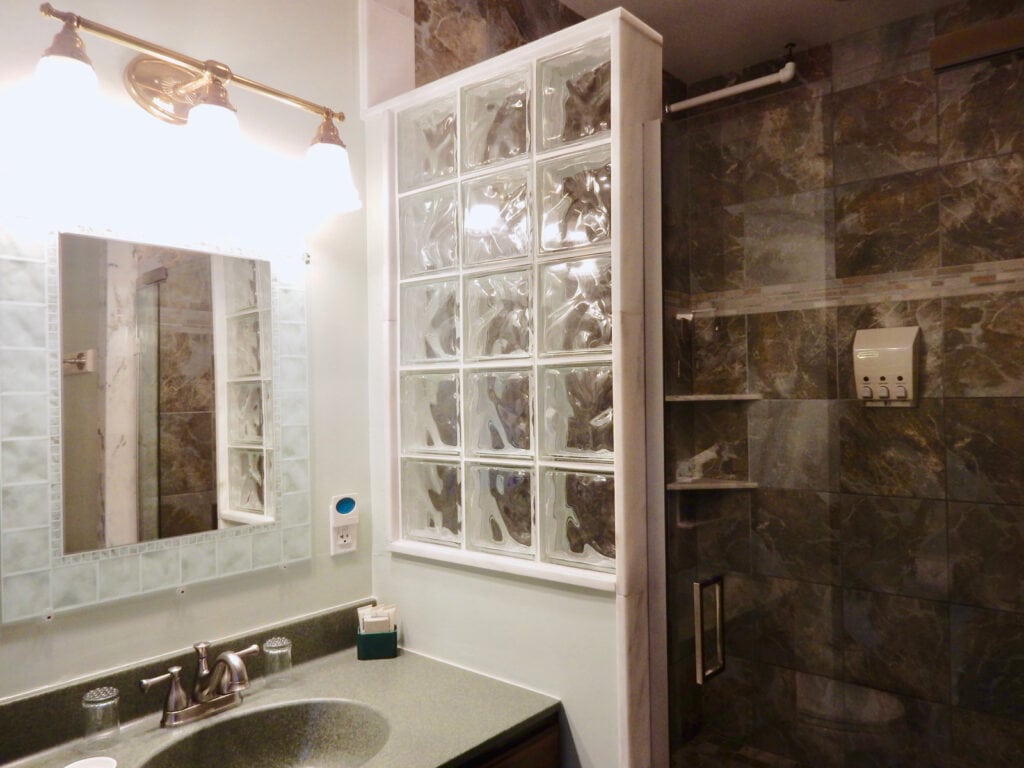
Bathrooms are large. My room (141 – Horatio Alger) features a large double shower with anachronistic (contemporary) grey tiles.

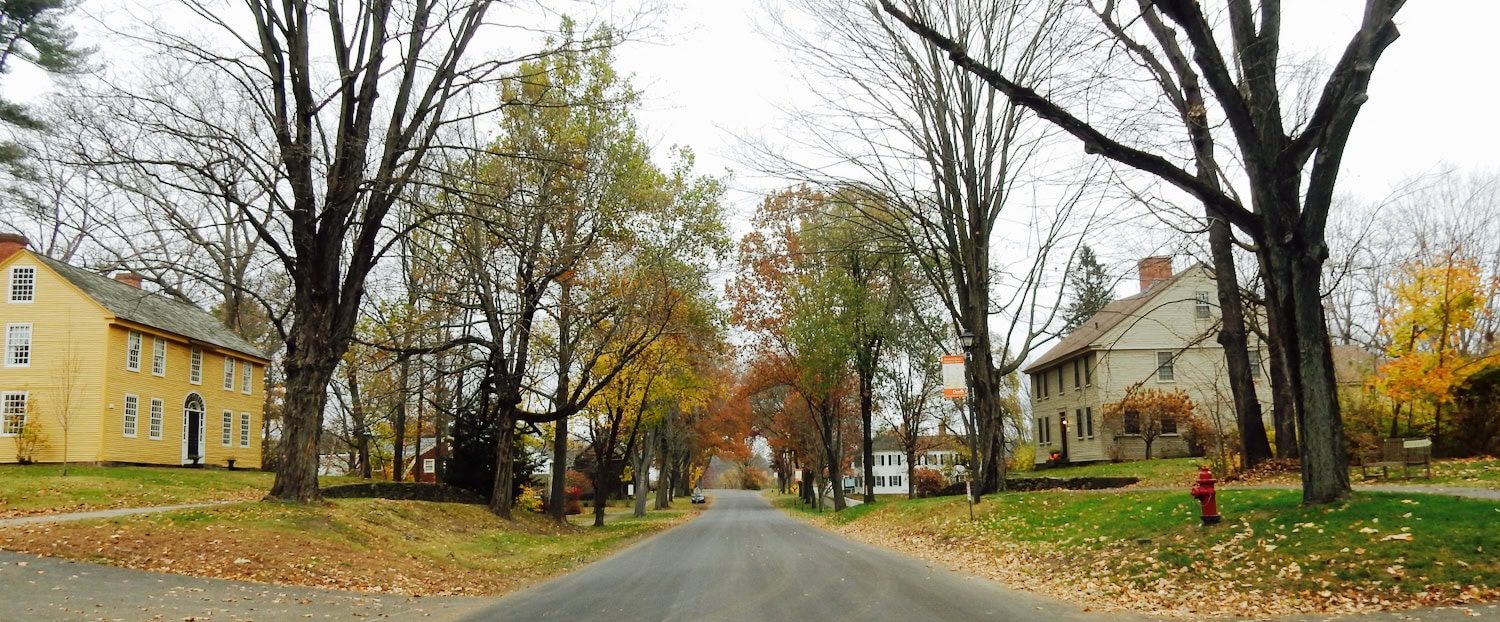
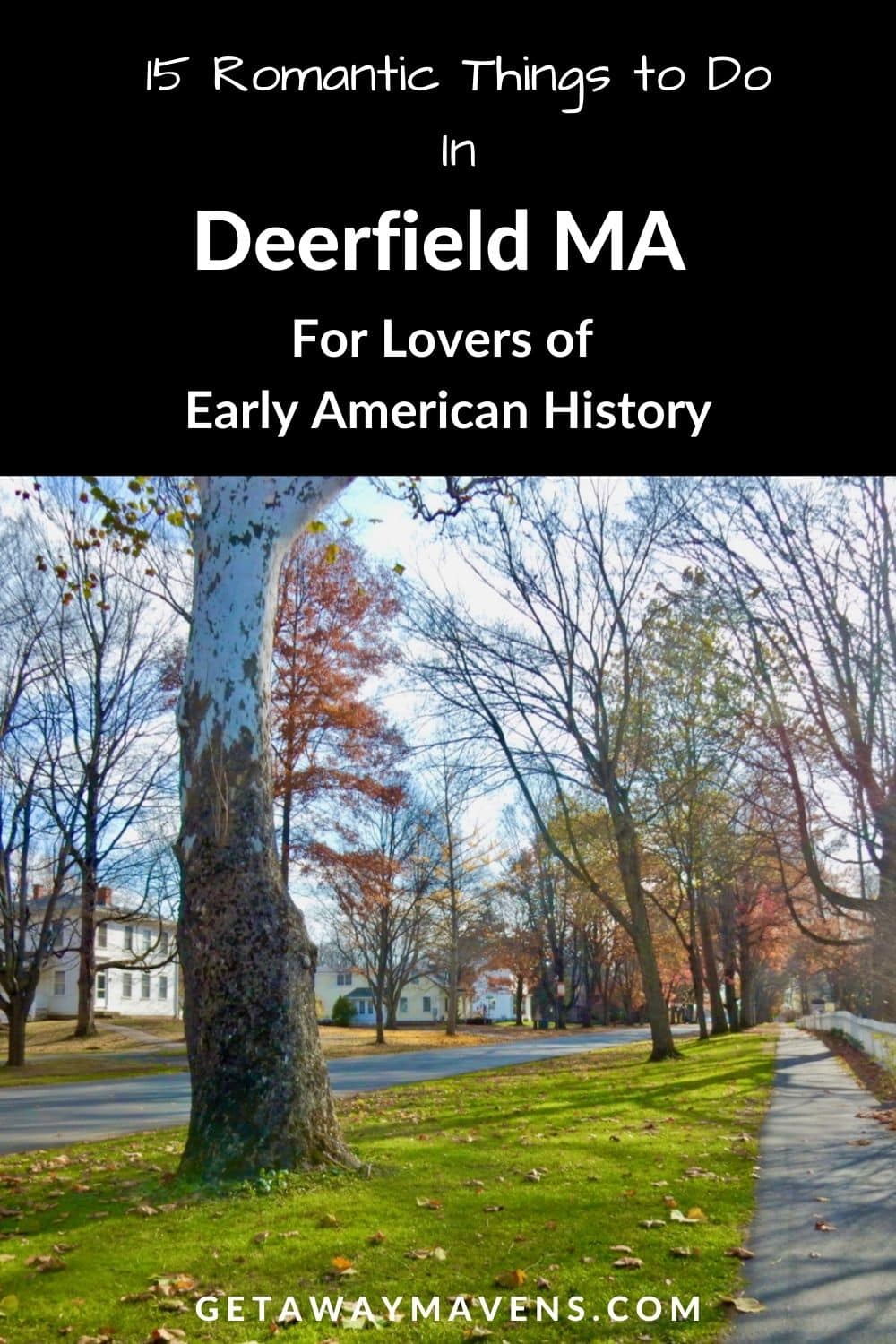
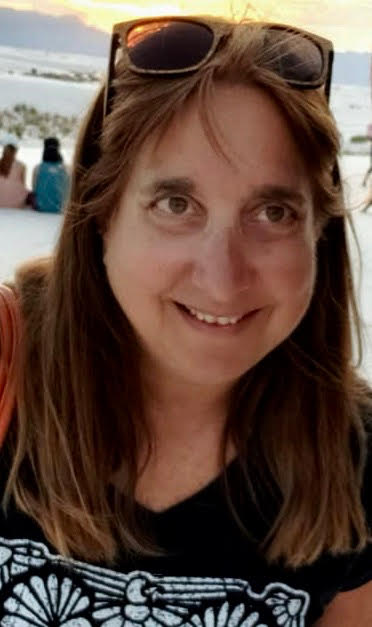
Great write up and we love all the information about Historic Deerfield. While in Deerfield visiting all these awesome attractions, be sure to stop by our lovely shop full of art, history, antiques, handmade wares and gifts! Arts & Antiques on 5&10, 717 Greenfield Rd. Open 7 days a week! Family owned and operated, we have over 40 artisans and vendors.
Great overview of HD and the area. I remember you on my tours your note taking is impressive….lol !
Thanks, Todd. They were great tours. Interesting and informative! Malerie
Thanks for reading and commenting, Danielle. When I’m back in the area, I’ll be sure to stop by and say hi. Malerie